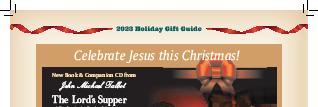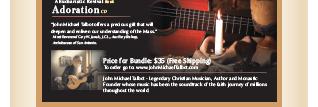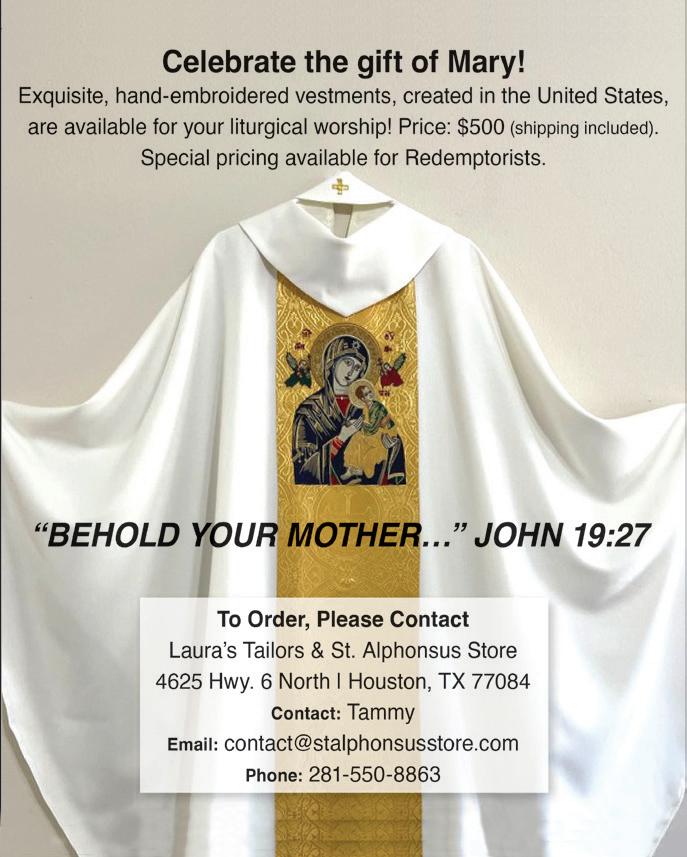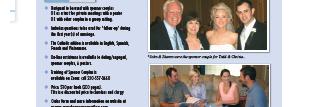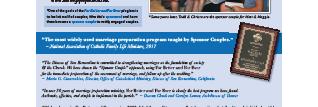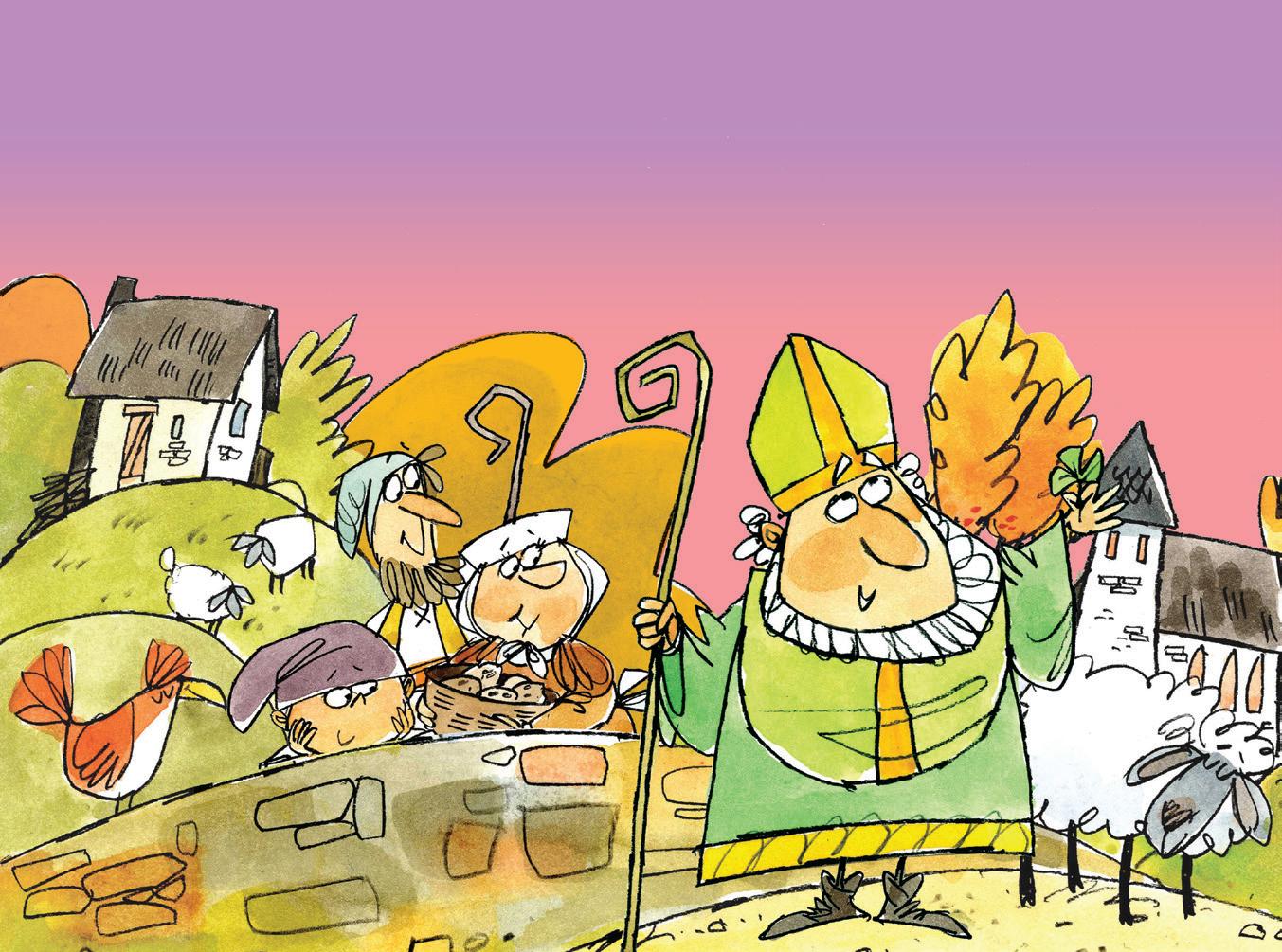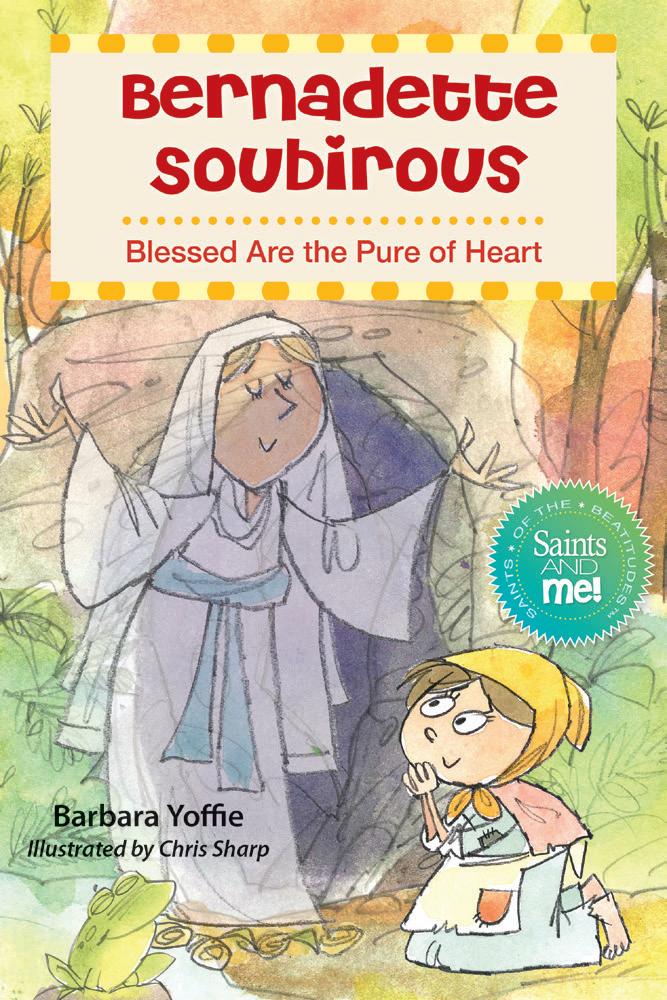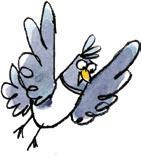“How I would like a Church that is poor and for the poor.”
POPE FRANCIS

From Breaking Glass to Making Glass
The Second Breath
The


“How I would like a Church that is poor and for the poor.”
POPE FRANCIS

The








Lavishly illustrated throughout with full-color photographs and artwork, this large-size book gathers together moving stories and meditations from great writers over the centuries who have been deeply touched by the grace of Our Lady of Lourdes at her glorious French shrine—including poets, novelists and popes. Some were rsthand witnesses of miracles; others were simply moved in their souls by the beauty of Lourdes and Mary's message.
Among the many famous historical, literary, and religious figures whose writings grace this volume are Paul Claudel , Pope Pius IX , Pope Pius XII , Joris-Karl Huysmans, François Mauriac, Émile Zola. is gorgeously illustrated, beautifully written collection immerses readers from afar in the great mystery of Lourdes. Mary's magni cent theological message to Bernadette— "I am the Immaculate Conception"—still resounds through our world today, as this stunning book unfolds the profound meaning of this enigmatic event and how it can change the way we live. LHRP . . . Sewn So cover, 8.25 x 10.5, $29.95
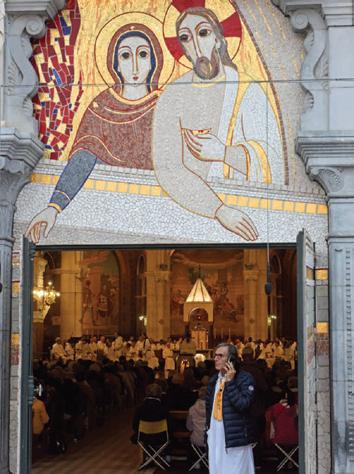

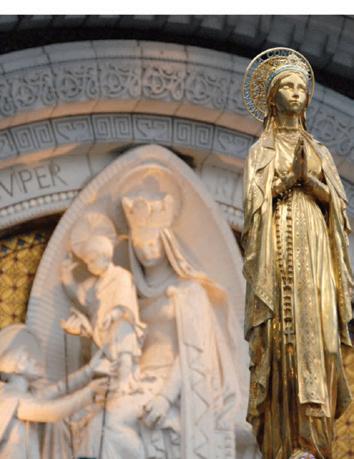

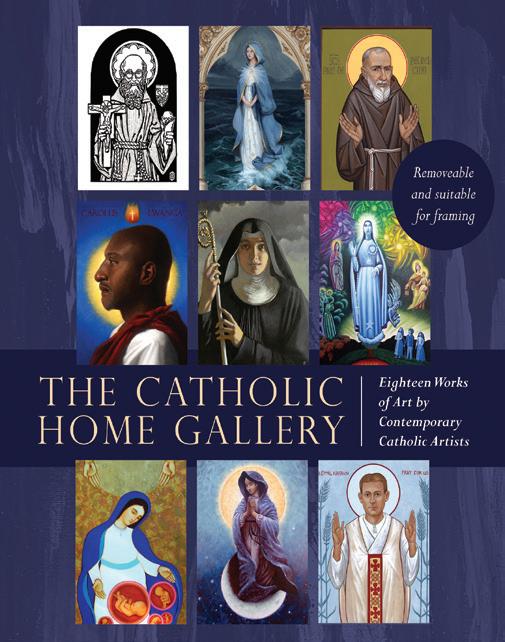




The Catholic Church has a long, glorious history of sacred art. From the earliest etchings of Christian symbols on the catacomb walls to the exuberant works of the Baroque era, from the shared patrimony of iconography that links East with West to the monastic revival of the nineteenth century, Catholic art is astonishing in its variety and diversity of styles.
But for too many, Catholic art is viewed as something largely in the past. is collection emphatically says, "Not so!" is bound volume of eighteen works of sacred art by Catholic artists will convince you that the great artistic tradition of the Church is alive and well. Each work in this collection is printed on an 8.5" x 10" detachable page, so that the work may be removed and easily framed in your home.
The nine artists represented here are Matthew Alderman, Neilson Carlin, Bernadette Carstensen, Matthew Conner, Gwyneth ompson-Briggs, James Janknegt , Timothy Jones, Michael D. O'Brien, and Elizabeth Zelasko .
CHGX . . . Quality So cover, 8.5 x 10, $29.95



BOOK EXCERPT
The Way Opened Up By Jesus
A commentary on the Gospel of Matthew
JOSÉ ANTONIO PAGOLA 10
Enter the Mystery: Giving Life to a Lenten Liturgical Song
During this Lent, a talented couple gives life to a liturgical song
TIM SMITH
. . . . . . . . . . . . . . . . . . . . . . . . . . . . . . . . 14
MEDITATION
For the Poor
“We do not need you to be our lawyer or social worker. We need you to be our priest,” says a farmworker.
FR. MIKE MCANDREW, CS S R 18
From Breaking Glass to Making Glass: He Pilots Art for God
Now at the controls of stained glass work, former flier’s windows inspire
JOHN MOONEY, JR.
. . . . . . . . . . . . . . . . . . . . . . . . . . . . . . . . 20
The Second Breath
The Resurrection’s healing power— wherever you get your podcasts
GREG GHERING
. . . . . . . . . . . . . . . . . . . . . . . . . . . . . . . . 24
In the light of our risen Lord we see all people as our brothers and sisters
FR. THOMAS M. SANTA, CS S R
. . . . . . . . . . . . . . . . . . . . . . . . . . . . . . . . 30
Lent and Easter Wisdom from St. Alphonsus Liguori
COMPILED BY FR. MAURICE NUTT, CS S R 34
THIS AND THAT
Variations of the Word Easter ; What Is Divine Mercy Sunday?
Trees in the spotlight, a Chesterton quotation, time to play ball in Korea
LIGUORI PUBLICATIONS STAFF
. . . . . . . . . .

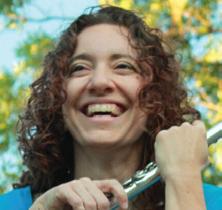
Kathleen Basi (“The Redeemer, Mary, and You”) is an award-winning author, a liturgical composer, a wife, and the mother of four children. She is a published novelist and the founder of Intentional Catholic, a ministry seeking to connect our Catholic faith to the real, practical situations of daily life. Kate, a past columnist and author for Liguorian, returns to the magazine in this edition.
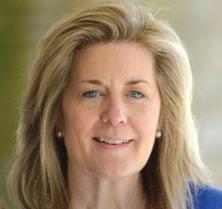

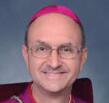



Sarah Christmyer (“Redemptive Living”) is a Catholic author, editor, speaker, and blogger who invites people to find the Word in Scripture. Her book Becoming Women of the Word: How to Answer God’s Call with Purpose and Joy, takes readers on a spiritual pilgrimage with the women of the Old Testament.
Juliet Byington Holden , (“Keep the Faith”) works with a foundation in St. Louis to connect critical resources with organizations and churches in the region, and after thirty years in the nonprofit sector, she has a deep appreciation for those who make straight the path for others.
Most Reverend Bruce Lewandowski, CSsR (“Plain Talk”), is auxiliary bishop, urban vicar, and episcopal vicar for Hispanic Catholics in the Archdiocese of Baltimore. Bishop Bruce was formerly the pastor of the Sacred Heart of Jesus and St. Patrick parishes in Baltimore.
Fr. Robert Pagliari, CSsR, PhD (“Holy Homework”), has served as a Redemptorist priest for forty-plus years, dedicating his life to an array of ministries, including teaching, parish administration, preaching, and editing. Liguori Publications updated Fr. Bob’s Holy Homework in 2022, a book that was first published in 2018.
Br. Raymond Pierce, CSsR (“The Lighter Side”), is a native of Saint John, New Brunswick, Canada. His ministry is storytelling via email. Every week, he sends “Morning Smiles” emails of humor and personal stories to nearly 1,000 senior citizens.
Fr. Thomas M. Santa, CSsR (“A Word from the Publisher”), was named president and publisher of Liguori Publications in January 2024. Professed as a Redemptorist in 1973, he has enjoyed many ministries and opportunities, including retreat work and writing reflections for the Scrupulous Anonymous newsletter. This is his second assignment as the leader of Liguori Publications. Fr. Tom’s hometown is Grand Rapids, Michigan.

Andrew Tran-Chung, a new columnist, is a seminarian for the North American Conference of Redemptorists. A senior, he plans to finish his studies at the seminary in the Bronx in June. In “Social Media Perspectives,” Andrew will explore and comment on topics related to social media.

Catholic. Pastoral. Trusted.
Publisher
Fr. Thomas M. Santa, CSsR
Director of Digital and Creative Services
Wendy Barnes
Senior Manuscript Editor
Bill Townsend
Associate Editor
Tina Bolek
Design, Production, and Post-Production
John Krus and John Gantz
Developmental Editor
Paige Byrne Shortal
Administrative Coordinator
Emmy Sandstedt
Journalist
Gary Michael Gately
Digital Sales Coordinator
Raymond Rikimaru
Sales and Customer Service Coordinator
Donna Hurley
© 2024 Liguori Publications, a ministry of the Redemptorists. All rights reserved. 636-464-2500. Liguori.org.
Unless noted, Scripture quotations are from the New American Bible, revised edition © 2010, 1991, 1986, 1970 Confraternity of Christian Doctrine, Washington, DC. Used with permission.
Subscription Questions? Visit Liguorian.org. Call: 866-848-2492;
Email: Liguorian@sfsdayton.com
Write: Customer Service, PO Box 292527, Dayton, OH 45429-0527;
If you prefer that your name and address not be available to select organizations, please mail your address label to: Mail Preference Service, Liguorian, PO Box 292527, Dayton, OH 45429-0527.
Liguorian is available on CD from Xavier Society for the Blind, 154 E. 23rd Street, New York, NY 10010, or call 800637-9193 for materials for the blind only.
To advertise in Liguorian: Call 800-325-9521 or email adsales@Liguori.org.
Publication Mail Agreement #40112731.
Canadian Return Mail Request: PO Box 122, Niagara Falls, Ontario L2E 6S8 Canada ISSN 0024-3450
Printed in the US at Kingery Printing.
Support Our Ministry
Please help us continue Liguorian and other Liguori Publications ministries by making a tax-deductible donation or remembering us in your will. Our legal title is Redemptorist Fathers dba Liguori Publications, Federal ID 43-0653409.
Print + Digital Subscription
One year: $28; Outside US: $40 (US funds only).
“God, help me to live daily in the light of the glory of your victory in Jesus Christ.”
ST. ALPHONSUS LIGUORI
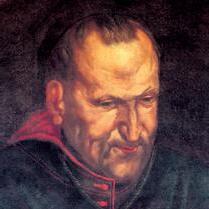
Liguorian is named after our founder and patron saint, St. Alphonsus Liguori (1696–1787). Doctor of the Church, bishop, patron of confessors, moral theologian, prolific writer, pastoral theologian par excellence, and founder of the Redemptorist Congregation. It is in his spirit and inspired by the charism he shared with us, “With him there is plentiful redemption for all,” that this magazine and all pastoral educational products of Liguori Publications proudly claim we always strive to be Catholic, Pastoral, Trusted. To learn more about the Redemptorists, visit Redemptorists.com
When I returned to Liguori Publications after an absence of twenty-three years, a simple, handwritten sign was taped to my new office door: “Welcome back, Father Tom.” Welcome back, indeed. It has been a blessed journey, one I could never have imagined or predicted.
When I concluded my first assignment at Liguori in 1999, the publication house was a completely different place. We were bustling with creativity, employees, energy, and imagination. The staff was youthful, I was in my early forties, and most of all, it was bursting with paper piled high to the ceiling and filling semitrucks that arrived daily.
Liguorian magazine was the shining star of the publication house, but we also produced bulletins, pamphlets, books, and other products. Some were intended for parish use, others for bookstores, and yet more for smaller, targeted audiences. Millions of printed pieces of paper were shipped from the warehouse every month. We were the distributor for other publishers, the Catechism of the Catholic Church was our bestseller, and our theological book service was thriving.
Fast-forward twenty-three years. We are still creative, energetic, and filled with imagination from a dedicated staff, including a few long-term employees who have faithfully served for more than forty years! Yet, the average employee age has increased and we have endured significant downsizing through the years. Realizing that commonplace products were no longer needed in the marketplace made us—like all other publishers—struggle to discover what the world looks like where paper is no longer king, and the cloud and digital marketplace are dominant. For a short period of time, our future was unknown, and we wondered if Liguori Publications had a place in this brave new world.
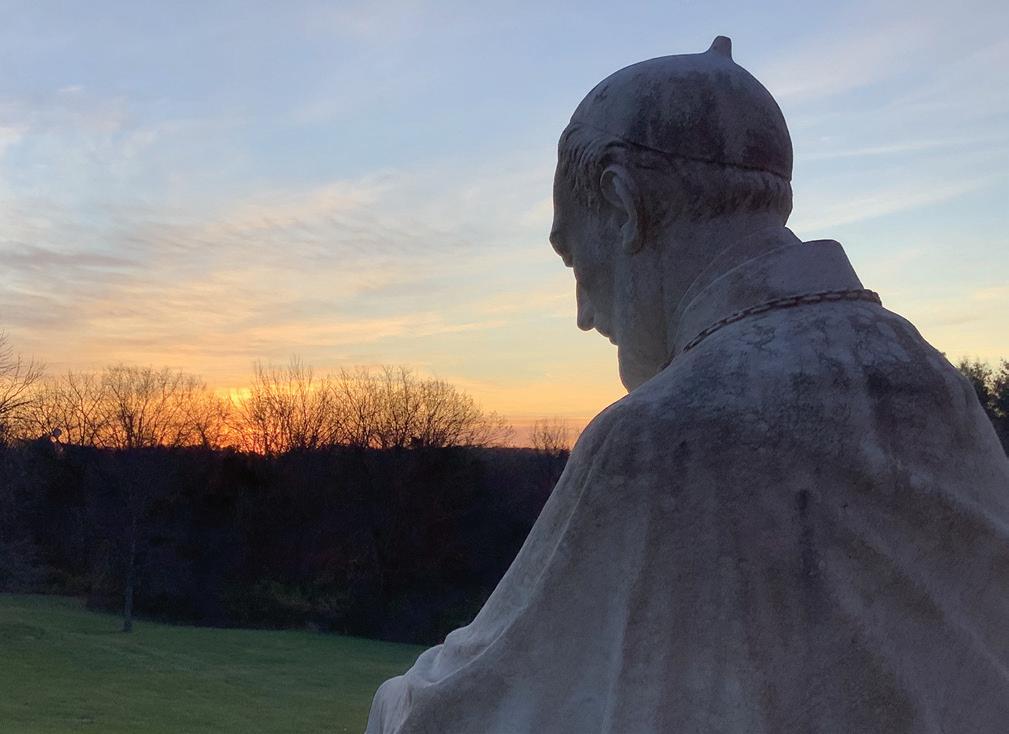
I can confidently report that not only do we have a place, but we know what we are doing, why we are doing it, and we are filled with enthusiasm for the ministry we are engaged in. Liguori Publications is CATHOLIC, PASTORAL, TRUSTED. This is not just a slogan, but the reality guiding every publishing decision and ministerial effort. To help us in our continued renewal, we are moving locations! Not very far, just a few hundred yards down Liguori Drive in Liguori, Missouri, past two cemeteries and a shrine to Our Mother of Perpetual Help, and into the former Redemptoristine convent.
As you read this magazine, the Monastery of St. Alphonsus is undergoing a complete renovation to make it suitable for our continuing publication efforts. The new space will be designed to accommodate twenty-five offices and a warehouse of 5,000 square feet. Most significantly, there will be a lot less paper! As we enthusiastically embrace digital publishing, our mission remains the same. You will find us in the cloud and on your phone, your iPad, your computer, your watch. No more CDs or floppy disks. Although our printed presence will be reduced (we remain committed to the printed Liguorian) we will always deliver the same
Liguori Publications is—and will remain— CATHOLIC, PASTORAL, TRUSTED.high-quality, pastorally focused products that have made and will continue to make Liguori Publications Catholic, Pastoral, and Trusted. I am very happy to be a part of this renewed effort and continued ministerial commitment.
One more significant change to note: we are no longer the Redemptorist Fathers of the St. Louis Province or the Denver Province. Liguori Publications is now the ministry of the Redemptorist Missionaries of North America. We minister in four primary languages: English, Spanish, Vietnamese, and French. Our geographical area includes the countries of the United States, Canada, and Mexico.
We are vibrant. We are strong. We are committed. We are excited about the challenges of digital publishing and more. These opportunities are part of our shared journey, bound in the charism gifted to us by St. Alphonsus Liguori:
With him there is plentiful redemption for all. A
We will continue to deliver the same highquality, pastorally focused products we always have.FR. THOMAS M. SANTA, CS S R
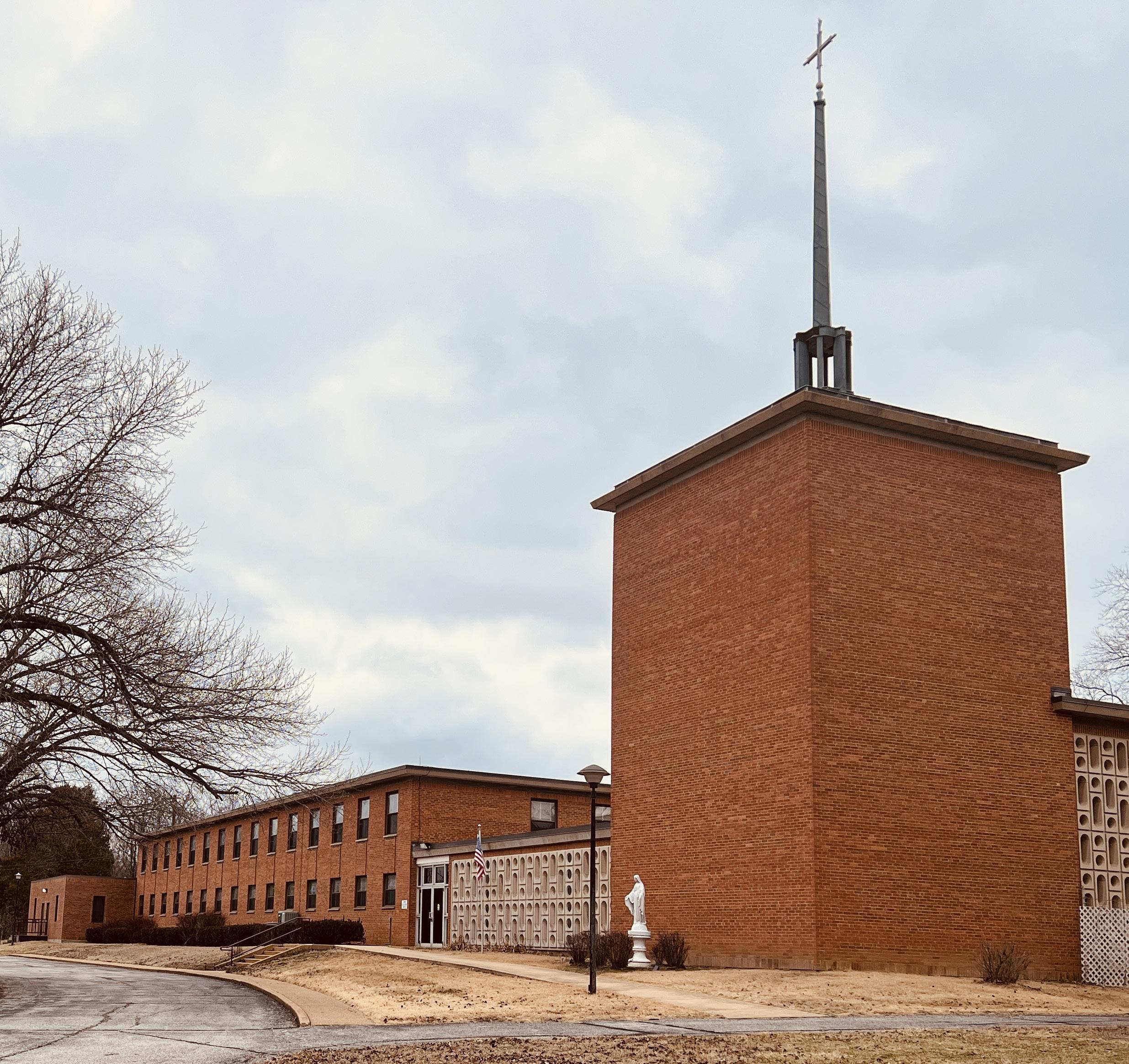
The former Redemptoristine convent in Liguori, Missouri, will be the new home of Liguori Publications.
*We'd love to hear from you!
WRITE: Liguorian Editor, One Liguori Drive, Liguori,MO 63057 E-MAIL: Liguorianeditor@Liguori.org
The opinions expressed don't necessarily reflect the opinions of the editors. Letters must be signed and include the writer’s full address and daytime phone number. Names will be withheld from publication upon request. The editors reserve the right to edit letters for length, clarity, and style.
Dear Readers,
During this season of Lent and Easter that began on Ash Wednesday (February 14), Liguorian’s mail page takes a special look back with a 1984 letter writer and the column in our magazine that inspired her to tell all of us about a family tradition which helped her as an adult. First, the May 1984 column.
A column first published in Liguorian in May 1984
After their vision, the beautiful little stars of Fatima—Lucia, Jacinta, and Francisco —established a habit of giving their lunches either to their sheep or to children poorer than themselves. They performed this heroic sacrifice for the conversion of sinners.
Feeling red-faced one afternoon as I sat under a tree enjoying every bite of my sandwich made with bakery-fresh whole wheat bread, I decided, in the spirit of Fatima, to tear off a few crusts for the birds as the Fatima children had done. From that day on, as I pedaled my bike along the road toward my usual lunch spot, I would pinch off six or seven chunks of bread and drop them on the side of the road, hoping a bird might hop along and delight in the noontime surprise.
After a month of this ritual, on a day when I was particularly hungry, I was tempted not to drop any of my precious bread. I told myself that birds don’t like whole wheat anyway, and the bread would probably get run over by a car or ruined by the rain before they got to it.
Then, with shame at my adult selfishness, the sad eyes of Lucia, Jacinta, and Francisco came to me. Surely these children had been far hungrier, after climbing the hills of the Cova Da Iria and chasing after sheep, than I who had been sitting at a desk all morning. I pinched off several meager squares of the all-natural brown bread, which seemed even more fragrant than usual that day, and dropped them.
Later that day, while I was typing an involved legal pleading, I noticed a brilliant blue jay on the ledge outside my office window. I stopped typing for a minute to take a peek at him. He turned toward me and I could see he had something in his beak. I leaned closer to get a better look—and what did I see? A morsel of whole wheat bread!
The words of the angel of Portugal sounded from my heart: “Make of everything you can a sacrifice, and offer it to God as an act of reparation for the sins by which he is offended, and in supplication for the conversion of sinners.” A blue jay, messenger from heaven, standing there with a chunk of my sandwich in his beak, affirmed it all. A

Your article “A Little Bird Told Me” by Pamela Lee (May 1984 Liguorian) touched me deeply. I remembered how, as children, my eight brothers and sisters and I saved candy during Lent. On Ash Wednesday, we’d line up clean fruit jars on the cupboard. Every time we received a piece of gum or candy, we’d put it in the jars. On weekends, we would open our jars, admire, and count our sweets. When Lent was over, the feasting began. No matter that the candy was slightly dirty and sticky. It tasted heavenly to us sweet-starved children. Because of this practice as a youngster, I find it easier to discipline myself as an adult.
Rita M. Wysong of Maryland, whose letter was first published in Liguorian in August 1984

The risen body of Christ held the wounds of his passion. His wounds were recognizable, visible. They were open, not healed. Amazingly, Jesus appeared in the cenacle (upper room) and, as part of their coming to know him again after the horror of Good Friday, he invited the apostles to touch his wounds. “Look, touch, probe,” he urges them (John 20:24–31), imploring, “See that I am real, that I am here and that I am not a ghost.” The disciples don’t fixate on Jesus’ wounds. In meeting Christ again and conversing with him, they come to terms with his wounds and their own participation in the wounding. They begin to proclaim Christ in all his magnificence, wounded and risen. Touching the wounds, they come to Faith.
Our world today is terribly and tragically wounded. All around us, we find the war wound, the poverty wound, the racism wound, the sexual abuse wound, the wound of being unloved and feeling unlovable, the divorce wound, the wound of abortion, the failure wound, and the wound that is division and sin. Wounds are personal and societal, recent and ancient, isolated and contagious; they affect all of humanity. We know well these wounds and others. They are all wounds in the body of Christ.
Wounds that are picked at don’t heal. The act of picking can deepen a wound, lead to bleeding and infection, scarring, and even permanent damage. Picking can lead to a heightened, constant awareness of and attention to the wound. Picking prevents healing. I wonder, is this us? Is this our Church today? Are we Catholics wound pickers? Are we so focused on picking at the wounds of our Church and our world that we can’t heal? Does picking keep us fixated on the wounds, making us unable to see and proclaim Christ—wounded yet risen?
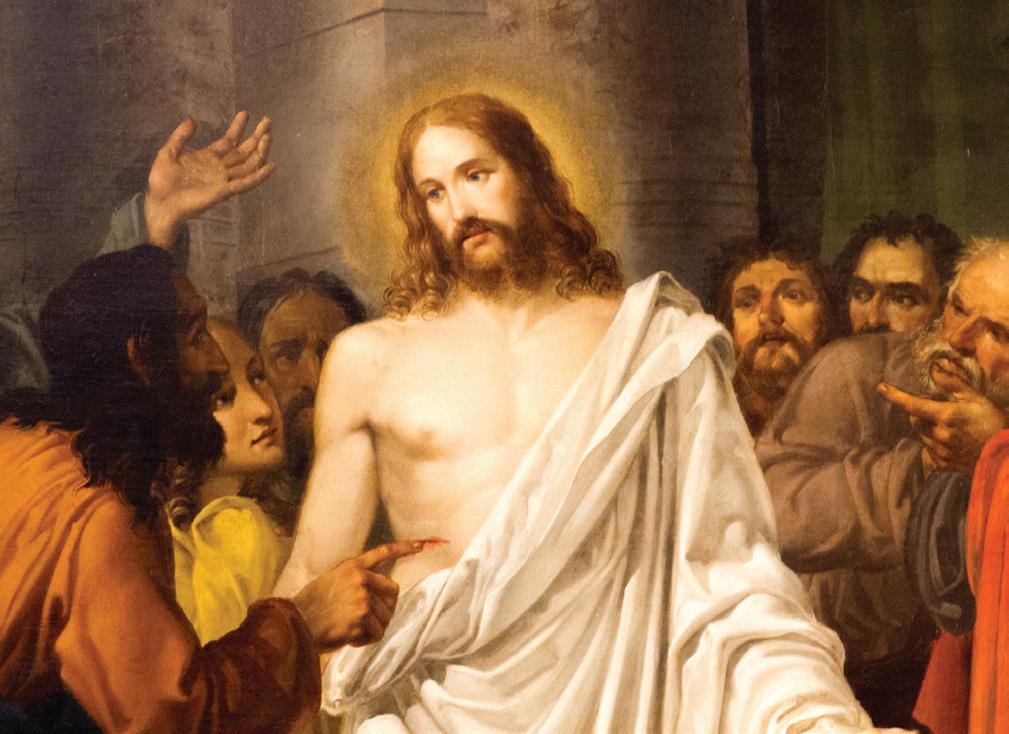
Synodality, demonstrated in the upper room, opens us to grace and the healing of wounds.
Some wounds heal with time. If left alone, they often take care of themselves. However, not all wounds are like this. Some need an intervention to encourage healing. The cenacle encounter of Jesus and his apostles, understood as a “synodal” experience, shows a type of wound care that advances beyond human efforts to heal; it encourages openness to divine intervention—grace.
Synodality is salve and succor for the healing of our Church’s wounds. Salve soothes, relieves pain, and promotes healing. The “synodal way,” with its method of spiritual conversations, is the Holy Spirit’s remedy our wounded world seeks. Together, wounds are examined, touched, and probed. Christ is present. It is a cenacle encounter. Certainly, the wound is still visible, but by grace all are prepared to move on to proclaim new life in the wounded, risen Lord, who is our hope and promise of resurrection. Through the “synodal way,” the Church embraces her wounds and comes to Faith. A
RESURRECTED JESUS CHRIST WITH


“You killed him, but God raised him from the dead.” This is what the disciples preach with faith in the streets of Jerusalem within a few days of the resurrection of Jesus. For them, the resurrection is the answer of God to the unjust and criminal act of those who wanted to silence Jesus’ voice and put an end to his mission for a more just world. We must never forget this. At the heart of our faith there is a crucified man whom God has proven right. At the very heart of the Church, there is a victim to whom God has done justice. A crucified life, inspired by and lived in the spirt of Jesus, will not end in failure but in resurrection. This mindset changes altogether the meaning of our efforts, pain, work, and suffering, and orients us toward a world that is more human and just for all. It is not a senseless venture to live with concern for those who suffer, to reach out to the needy, to help the helpless; it means journeying toward the mystery of a God who will resurrect our lives forever.
To follow the crucified one until we share in the resurrection with him is finally to learn to give our lives, our time, our efforts, and perhaps our health, for the sake of love. We will not be lacking in wounds, weariness, or pain when following Christ. Rather, this is the hope that will sustain us: “He will wipe every tear from their eyes…” (Revelation 21:4). Because of Jesus’ resurrection, there will be no more death or mourning or crying or pain, for the old order of things has passed away.
Easter is the feast for those who feel alone and lost. The feast for those who are ashamed of their unkindness and sinfulness. The feast for those who feel dead inside.
Easter Sunday is not the celebration of an event that is fading away with every passing year. Believers celebrate the Risen One who lives today, fulfilling history with renewed life.
Believing in the Risen Christ does not mean believing in something that happened to the dead Jesus. It means hearing these words from the depth of our being, “Do not be afraid. I am the first and the last, and the one who lives. Once I was dead, but now I am alive forever and ever” (Revelation 1:17–18).
The Risen Christ lives today in our lives, infusing us with his vital energy. In a hidden but real way, he is drawing our lives toward the final fullness. Celebrating Easter means understanding life in a different way.
The Risen One is here in our tears and sorrows as a mysterious, everlasting comfort. He is here in our failures and helplessness, defending us with his enduring power. He is here in our times of depression, silently accompanying our loneliness and sadness.
The Risen One is here in our sins as the mercy that sustains us with infinite patience, understanding, and love. He is even here in our death, bringing life that triumphs when it seems to be extinguished.
No human being is alone. No one is forgotten. None of our cries go unheard. The Risen One is with us and in us forever.
Easter is the feast for those who feel alone and lost. The feast for those who are ashamed of their unkindness and sinfulness. The feast for those who feel dead inside. The feast for those who have discovered the hope of eternal life in the Risen One. Blessed are they who let
the words of Christ penetrate their hearts!
God’s powerful love is manifested in the resurrection and the joining with Jesus in his mission of redemption, “kingdom living,” which saves us from death and sin. Can we experience that life-giving power today? The answer is a resounding “Yes!” but first, we need to become aware that our lives are inhabited by an all-embracing Mystery whom Jesus calls, “Abba, Father.” With so much suffering in the world, our lives may seem chaotic and absurd to us. They are not. Although it is not always easy to feel it, our existence is sustained and oriented by God toward a final, lasting fullness.
To fully feel and understand this truth, we need to begin living from within ourselves: I am loved by God, and an endless fullness is waiting for me. There are so many frustrations in life, and sometimes we love ourselves so little that the joy of living dies within us. The resurrection of Jesus reminds us that God exists and saves us. In heaven, God will reveal fullness of life that we have not experienced here on earth.
Celebrating the resurrection of Jesus and living in the Kingdom of God means opening ourselves to the lifegiving energy that God provides. The true enemy of life is not suffering, but sadness. With sadness, we lose our passion for life and compassion for those who suffer. We overflow with apathy and cheap, short-term distractions that deprive us of the best part of existence: love. The resurrection of Jesus is our source and motivation for new life.
What does it mean to believe in the Risen One? Christians must never forget that faith in the Risen Jesus Christ is much more that re -
citing a creedal formula. It is even more than affirming that something extraordinary happened to the dead Jesus about two thousand years ago. Believing in the Risen One means believing that Christ is alive now, full of power and creativity, drawing life toward its ultimate destiny, and liberating humanity from its gradual slide into permanent chaos.
RJESUS IS PRESENT. Believing in the Risen One means believing that Jesus is present in the midst of the believers. It means taking an active part in the meetings and tasks of the Christian community, joyfully affirming that where “two or three are gathered” in his name, he is present, bringing hope into our lives.
PRAYER. Believing in the Risen One means discovering that our prayer to Christ is not an empty monologue with nobody listening, but a dialogue with someone who is alive with us, at the heart of life itself.
CHALLENGE. Believing in the Risen one means permitting his living word to challenge us, and discovering in the practice that his words are “spirit and life” for our nourishment.
EXPERIENCE. Believing in the Risen One means knowing from personal experience that Jesus has the power to change our lives, to raise up the good in us and gradually free us from what deprives our spirit and kills our freedom.
COMPASSION. Believing in the Risen One means being able to see him in the last and the least of our brothers and sisters, calling us to compassion and solidarity.
RESURRECTION. Believing in the Risen One means believing that he is the firstborn of the dead, the beginning of our resurrection, and the one who has already opened up for us the possibility of eternal life.
LIFE. Believing in the Risen One means believing that neither suffering, nor injustice, nor serious illness, nor sudden and unexpected sickness, nor oppression, nor sense -
less violence and death, have the last word. The Risen One is the only Lord of life and death. R
As the people of God, we can live generously, in radical communion and commitment to each other. We can choose, through the power of God’s grace, to live an unselfish life. Love does not mean losing our life, but
rather gaining it forever. The resurrection of Jesus demonstrates that love is stronger than death. To live by doing good is the best way to grasp the meaning of the beyond.
Faith in the resurrection is hard to share, but it is not hard to admire. It represents a noble effort to continue affirming life, even when life is seemingly defeated by death. This is our faith. This is the faith of the followers of Jesus. A
José Antonio Pagola wrote one of his many books, The Way Opened Up By Jesus: A Commentary on the Gospel of Matthew, in 2012. Born in Spain in 1937, he completed his theological studies in 1962 at the Papal Gregorian University in Rome and his studies in sacred Scripture at the Papal Biblical Institute in Rome in 1963. He also studied biblical sciences at the Ecole Biblique in Jerusalem. Pagola is a professor at St. Sebastian Seminary and at the Faculty of Theology of Northern Spain. He has dedicated his life to biblical studies and Christology and has done research on the historical Jesus for decades.
 JOSÉ A. PAGOLA
JOSÉ A. PAGOLA
Jesus never intended to found a Church made up of adherents to a religion, but to call together followers of the Way that he was opening up. Christian communities can only live up to that vision by keeping the real-life person of Jesus and his message, the reign of God, at the center of their life.
The four Gospels, written in different historical and cultural contexts, give us different perspectives on that person and that message. This biblical commentary explores Matthew’s perspective, using the Matthean passages. Each passage is examined, both in the context that shaped Matthew’s telling of the story, and in the context of today’s Christian communities. Matthew’s perspective shows Jesus transforming the expectations of the People of Israel. He is the fulfillment of God’s ancient promises to them; he is God’s new presence with them after the destruction of the Temple; he is the prophet of a new law, proclaimed from a new Mount Sinai; and he is the Messiah who calls together the new Israel, which Matthew calls the Church. He is also the Teacher of Life, whose surprising, and disconcerting, sermons and parables offer the new spiritual energy that today’s churches need in order to be transformed from adherents into followers.
Convivium Press
7.2 x 5.2; paperback 264 pages
ISBN-10: 1934996289
ISBN-13: 978-1934996287

TIM SMITH
As a child, I loved reading the Hardy Boys mystery series.
When I found myself at a Catholic graduate school studying the liturgy, my professors spoke of mystery in a historical or theological context. My childhood definition of mystery clearly didn’t make the cut. My uncle, a priest, told me that “some things are just too difficult to wrap our heads around (like the Trinity, why good people suffer, why men don’t ask for directions), and when that happens, the Church calls it a ‘mystery’.”
As a simple musician, I may not be qualified to explain mystery in theological terms, but as a spouse and a parent of five children, the mysteries of everyday life are a familiar struggle. The mystery of figuring out what your spouse wants and why she is acting a certain way. (At times, I’m a mystery to her, too.) The mystery of childrearing and why some kids “get it,” while others don’t. The mystery of how to pay the bills or how to work the TV remote.
In the nineties, wife Julie and I found ourselves serving as music directors at a large parish in Mesa, Arizona. We were asked to come up with musical themes for the seasons of Lent and Advent. With various images and symbols of Lent (ashes, the
desert, the via dolorosa), a theme becomes a lens through which a Catholic community can focus and interpret these images and symbols.
While brainstorming potential themes, the phrase “enter the mystery” came to our minds, both as an affirmation and an encouragement to step into the unknown. For us, placing the lyrics “Enter the mystery, welcome the mystery” on the lips of our parish congregation was a way of telling them to not be afraid, to move into the deeper waters of faith, even when it may seem frightening. Christ’s invitation to surrender is always calling us. Entering the mystery of a relationship with Christ brings about a paradigmatic shift and allows us to view our lives through a renewed lens.
The origins of the word mystery go back to ancient times. The Greek word mysterion was translated into the Latin mysterium. For millennia, saints such as Augustine, Aquinas, and John Paul II have used the concept of mystery in their writings.
The texts of the Mass are filled with references to mystery: “Let us acknowledge our sins and so prepare ourselves to celebrate the sacred mysteries…”; “By the mystery of this water and wine…”; and “The mystery of faith.” The concept of mystery is abundant in the liturgy.
“Enter the Mystery” came to our minds, both as an affirmation and an encouragement to step into the unknown.
The mystery theme Julie and I worked on began to take shape in the form of lyrics describing those paradoxical statements of our faith, “Life comes from loss, joy from the cross, losing, you win.” For the musical composition, we chose a driving guitar rhythm reminiscent of “The Wreck of the Edmund Fitzgerald” and a bitonal chord structure, with the verses in a major mode and the refrain in a minor mode. Originally, we wrote verses reflecting upon the first weeks of Lent:
Enter in ashes, in touch with the shame, though hardened by hatred and fooled by fame…
Enter the Sacred, this season of Lent, to die and to rise, to rejoice and repent….
Then, as we began to look at other images of the Lenten journey, we decided to include verses that contained eucharistic themes:
Enter the Mystery, the Passover feast, where the bread is our hope and the wine is our peace. Enter the banquet of stranger and friend where God is the Giver of gifts without end….
We formulated verses about adult baptism:
Enter the waters and enter the church. Welcome the journey, continue the search. Enter with fam’ly or enter alone. Enter in safety, a place to call home….
We devised verses about healing:
Enter the healing and enter the grace, welcome the warmth of Christ’s tender embrace. Enter the Garden forgiven and free with a heart that can hear and a soul that can see….
We created verses about Good Friday:
Enter the Passion and enter the pain of hearts that are broken, betrayal and blame….
We penned a verse for Easter Sunday to complete the journey of Holy Week:
Enter the vic’try and open each grave. Jesus is risen! Do not be afraid….
Combined, these liturgical elements helped us create a song we feel expresses the wonderful mysteries of the Lent and Easter season.
It is a joy, an honor—and especially a moment of humility—to have any community sing “your” song. We are grateful for the opportunity to share our simple gifts in a way that, hopefully, helps people contemplate the mysteries and beauty of our faith, and draws them closer to God. A
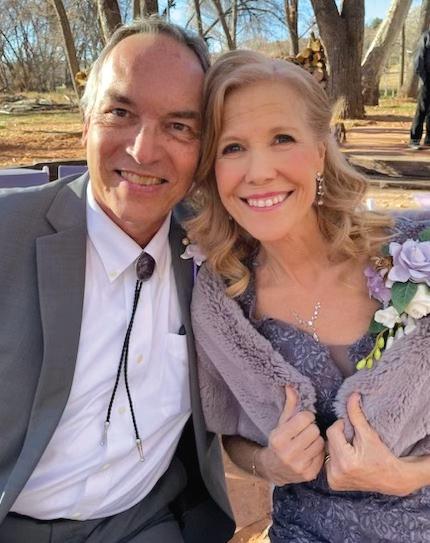
Tim and Julie Smith (timandjuliesmith.com) have been professional music ministers in the Phoenix area for more than thirty-five years. They have written and recorded dozens of collections of music, ranging from liturgical music, theater, children’s music, and bilingual music. Their songs have been published in the Spirit & Song hymnals (Oregon Catholic Press) and the Voices as One hymnals (World Library Publications). Several of their song collections are available through Resource Publications, Inc. in San Jose.

To listen to Julie & Tim Smith’s “Enter the Mystery,” visit: timandjuliesmith.com/ listen-to-songs
• Click “Listen to Songs.”
• Scroll to and click “Enter the Mystery”
timandjuliesmith.com/listen-to-songs
Ionce met an extraordinary priest from Africa. Fr. Ubald Rugirangoga was known for miraculous healings, some of which I witnessed myself. But the most remarkable healings he accomplished and encouraged were healings of the heart. More than eighty of his family members and 45,000 parishioners were brutally murdered in the Rwandan genocide. As he struggled with the grief and horror of this tragedy, he heard the Lord say, “Ubald, pick up your cross”—and then felt the burden lift. Fr. Ubald (1955–2021) devoted the rest of his life to spreading the message of forgiveness as the secret to peace.
The impact of Fr. Ubald’s ministry in Rwanda has been nothing less than miraculous. How is it possible to forgive such horrible things? How is it possible to find healing and peace in the aftermath of evil? Only, Fr. Ubald would say, in Jesus. With the help of the Lord, Fr. Ubald was able to forgive the man who ordered the killing of his mother—as well as helping thousands of others reconcile with their personal tragedies.
What is true for survivors of genocide is equally true for those of us who carry the scars of childhood trauma, betrayal, or prejudice—and it is true when we suffer smaller hurts. That the damage is “less” does not make it insignificant. When we let hurt rankle, it destroys us from the inside. When we retaliate, we increase the damage. Instead, forgiveness is the answer. It’s also necessary: God’s “outpouring of mercy cannot penetrate our hearts as long as we have not forgiven those who have trespassed against us” (Catechism of the Catholic Church , 2840).
[And] be kind to one another, compassionate, forgiving one another as God has forgiven you in Christ (Ephesians 4:32).
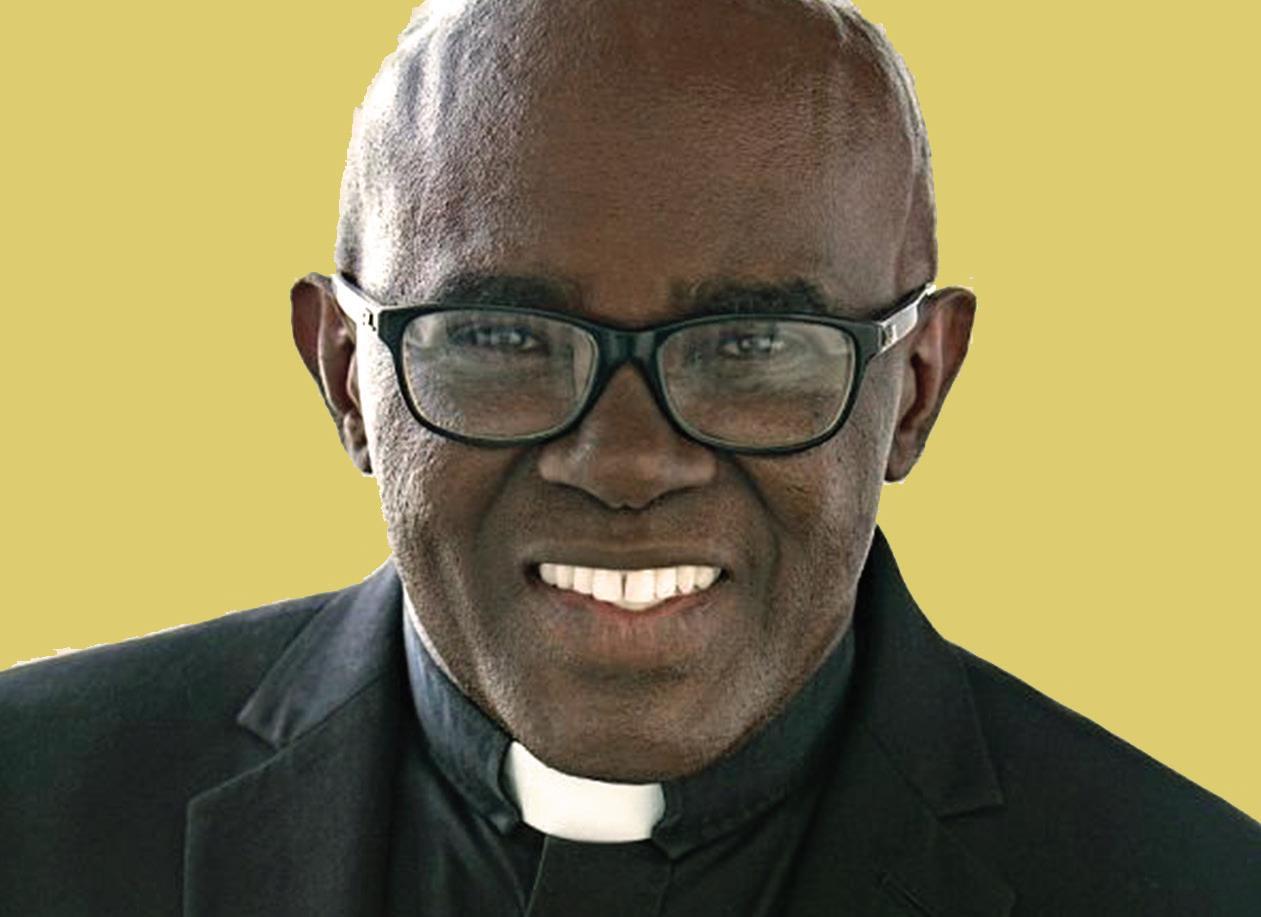
When hurt threatens to overwhelm me, it helps to remember that forgiveness is not an emotion but “a personal choice, a decision of the heart to go against the natural instinct to pay back evil with evil” (World Peace Day, St. John Paul II, 2002). It may not always be possible to forget past hurts. But it’s also not necessary. I can feel hurt, remember injury, and live with loss—and still forgive as Jesus did, from the cross. Forgiveness leaves justice to God.
Here are three helpful steps in choosing to forgive:
• Repent of your unforgiveness.
• Ask God to forgive the person who hurt you.
• Each time the person comes to mind, say, “Lord, I forgive ______. Bless (him/ her).”
• Then show that you mean it, perhaps with an act of kindness or a prayer for the person’s intentions.
Acting out forgiveness is how we learn to forgive. And as we act, by the grace of God, our hearts will follow.
Love your enemies, do good to those who hate you, bless those who curse you, pray for those who mistreat you.... Then your reward will be great and you will be children of the Most High, for he himself is kind to the ungrateful and the wicked. Be merciful, just as [also] your Father is merciful (Luke 6:27–28, 35–36). A
“How I would like a Church which is poor and for the poor!”
Those words of Pope Francis at the beginning of his papacy in 2013 echo the philosophy of St. Alphonsus Liguori, the founder of the Redemptorist Congregation. Alphonsus’ commitment to the poor was often tested, even by his own confreres. Many early members of the Congregation of the Most Holy Redeemer, founded in 1732, did not persevere and left the Congregation. Choosing to live and work with the poor was not merely a pious platitude for Alphonsus.
“Being poor” is not easy. Insecurity is constant. My work with the poor has primarily been with migrant youth and farmworkers (campesinos). For migrants, there is a lack of security, especially when political
figures reduce them to mere statistics and fail to recognize their human dignity. Many migrants have children and other family members who depend on them. Poverty and lack of security place great stress on those with inconsistent employment.
After working many years with campesinos, I spent the summer of 2007 living in migrant camps and picking cherries so I could experience the life of migrant campesinos. Many of the workers were surprised at the presence of a priest in the orchard. At the end of the first day, two men were having a beer near their truck. When I passed by, they hid their beers and simply said, “Nos vemos mañana, Padre”
Onley, Virginia, 2023: Fr. Mike McAndrew, center, meets after Mass with the Eastern Shore Migrant Ministry team and immigrants who filled farm jobs under the United States H-2A Temporary Agricultural Worker Program.

“We do not need you to be our lawyer or social worker, we need you to be our priest. We want our children to receive their first Communion. Many parish programs do not conform to the mobility of our lives as campesinos.”A MIGRANT FARMWORKER, TALKING WITH FR. MIKE MCANDREW
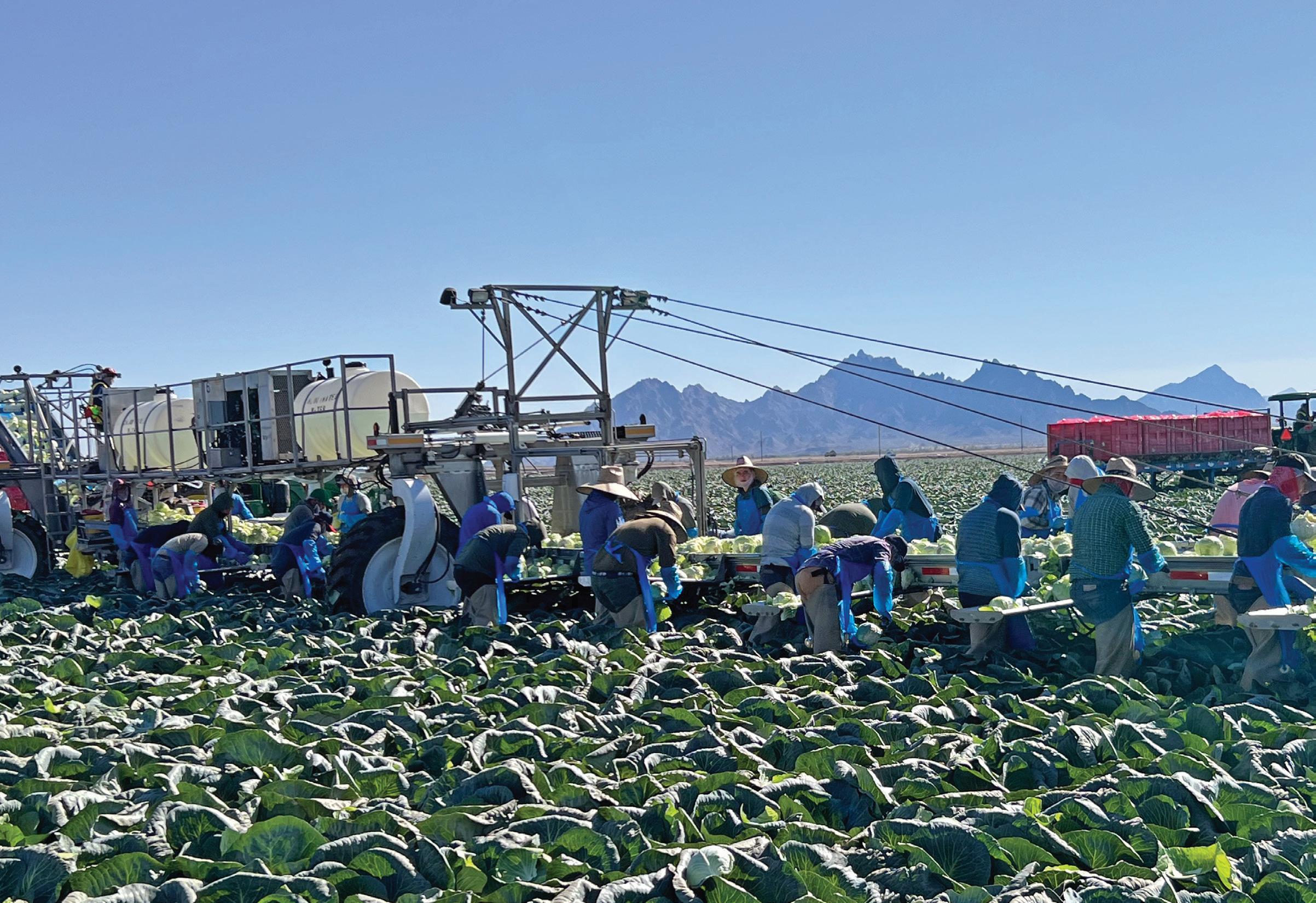
(“We’ll see you tomorrow, Father”). On the second day, they held up their beers and asked, “Padre, do you want a beer?” I was honored to be accepted by them.
While I was able to do the physical labor, enjoy the camaraderie of the workers, and live in some austere conditions, there were many aspects of the campesino life that I could not fully experience. Unlike my fellow workers, I had security as a member of the Redemptorists. I had health insurance. No one else depended on my income. I knew that after the harvest, I would return to my religious community. Working and living with campesinos helped me appreciate their hope, joy, and faith. Yet, as for their poverty, the poor I was with did not want their priest to be poor with them.
After a Mass in an orchard in Oregon, I asked campesinos, “If I return next summer for the harvest, what more could I offer you?” A woman replied, “We do not need you to be our lawyer or social worker, we need you to be our priest. We want our children to receive their first Communion. Many parish programs do not conform to the mobility of our lives as campesinos.”
The social justice and charitable activities that help the poor are essential works of our Church. They are ways of following Jesus’ call to recognize him in the poor, the hungry, the naked, the stranger, and those who are ill or in prison, but we must also provide pastoral care, the word and sacraments. Pope Francis says in the Joy of the Gospel, “The worst discrimination which the poor suffer is the lack of spiritual care.”
The work of the Redemptorists and our supporters reflects the vision of St. Alphonsus and of Pope Francis. May our Church be “poor and for the poor.” Amen. A


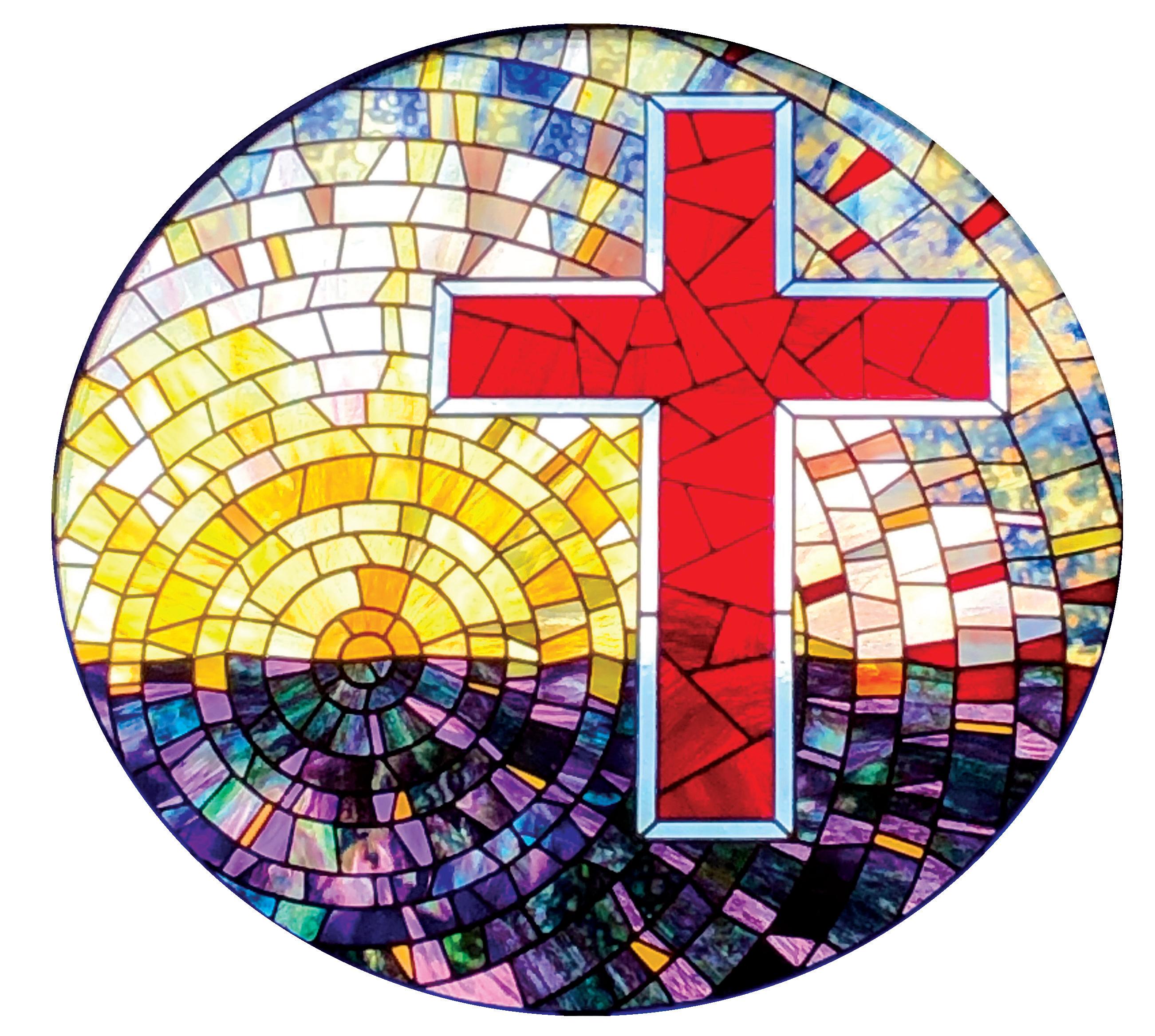

WORK, A RETIRED AIR FORCE PILOT WHO ONCE BROKE GLASS TODAY USES IT TO INSPIRE
JOHN MOONEY JR.The military fighter aviation profession is competitive and swashbuckling, rewarding those blessed with an uncanny awareness of their surroundings and punishing those who don’t always see the “big picture” in air combat. I lived in this intense world for twenty-six years as an F-16 fighter pilot. As the oldest of five children, whose father made it clear college was my financial responsibility, I somehow stumbled into a “free education” at the Air Force Academy.
After graduating with a degree in civil engineering, I decided to pursue Air Force wings, even though I had a weak stomach. However, I overcame airsickness and was awarded the only F-16 assignment in my class.
After being blessed with success in the fighter pilot world, my career memories have solidified around a few quiet moments in the “high untrespassed sanctity of space” that poet John Gillespie Magee Jr. refers to in High Flight, and the many challenging experiences I had during peace and conflict in the air and on the ground.
The smell of jet fuel, the camaraderie of reliving a sortie in the “bread van” ride back to the squadron, the butterflies in your stomach as you tense your body into an anti-G-straining maneuver, the power of the afterburner light— these are only experienced in the world of military fighter aviation. The common fear among fighter pilots is that when your career is over, you’ll forever long for those intense experiences. I was no different.
During my fighter career, I was a weapons officer, the squadron’s tactical expert. This position involved years of developing training scenarios in peacetime that replicated the dynamic and brutal nature of air combat. The Vietnam-era veterans who trained me stressed the need for detailed mission planning. I was taught that the plan, your knowledge of the enemy, and a detailed study of the environment all contributed to establishing a solid foundation to survive a first encounter and subsequently deliver a lethal response. These planning skills and tedious approaches to a dynamic
engagement would find their way into my method of envisioning and crafting art glass panels.
The craft of stained glass art is largely about the ever-changing interplay of light, glass, and glass texture. “Seeing” what the finished work will look like when the light of day fluctuates is what makes this ancient craft so challenging.
I had learned the basics of stained glass art from an art teacher in a small Oregon high school. She enlisted my help when she traveled to local art shows, where I learned how to plan and execute the many types of glass projects we sold at weekend art festivals. Decades later, as my days in the fighter cockpit ended, I finished a half-dozen projects for friends and family.
After completing these projects, I recognized some areas for improvement, but overall the results were pleasing, and I had rekindled some “glass confidence.” Months later, our parish priest announced his interest in pursuing traditional stained glass artwork for a new church addition. He had a clear vision of what he wanted, and I expressed my reborn “glass confidence” by volunteering to design and build a window that matched the themes he envisioned.
Fr. Paul Coury, CSsR, instilled confidence in me. We traded design ideas, balancing his artistic inspirations with my knowledge of glass panel design. We settled on a clean and beautiful cross design set against a desert sunrise. I was confident I could execute this project. However, I felt we could enhance the spiritual space even more. I found a background design I believed would improve the project but would be difficult to accomplish.
But Fr. Coury balked at my com-
John Mooney Jr., a stained glass artist, retired as a colonel in the US Air Force in 2008, completing a twenty-seven-year career. His final assignment was as the commander of a combined Air National Guard, Air Force Reserve, and active-duty Air Force flight test operation in Tucson, Arizona, from 2003 until 2008. He logged 4,000 flight hours in the F-16 during his twenty-six years in the “Viper” (as he and his fellow fliers refer to the F-16).
plex design. He noted the original design would take less effort. However, I insisted I could do it, and we finalized the intricate design. I got to work in a temporary workshop I set up in a dark storage room at the Redemptorist Renewal Center in Arizona.
Glass fabrication involves understanding how glass scores and breaks, but more importantly, how it interacts with light and the surrounding design. Our window design consisted of 308 pieces of glass that I would place while in a dark workshop, where I hoped to successfully construct a beautiful interplay of light and glass. While the familiar process of meticulous air attack planning and drafting target attack schematics were not far removed from the strict detail required for the stained glass craft, I found myself frightened to fail and regretted my fighter pilot self-confidence. And I wonder what my former fighter pilot mates would think of my new work, I thought.
Our design was especially intimidating due to the numerous pieces requiring accurate placement onto a template, which we use to keep the piece intact. Because my studio was dark, I couldn’t precisely check my design choices, so I began going outside, holding my glass options
against the sunlight, hoping for the right inspiration. My self-doubt about my decisions grew, so I turned toward prayer.
My early workdays began with morning Mass at Our Lady of the Desert chapel, a short walk from the studio. The words “The Desert Will Lead You to Your Heart, Where I Will Speak” are inscribed on the sanctuary, reminding me I naively believed I could accomplish an inspirational art panel without faith that God would guide me. After this realization, my outlook immediately changed, and my comfort and excitement grew as I reoriented my attitude.
God began to soothe my apprehension with love for the labor of art. He guided each artistic choice I made. “To work is to pray” became my daily prayer as I overcame doubts and made hundreds of trips into the sunlight, finding the perfect pieces.
Once the panel was completed, volunteers and I had to tip the window vertically and carefully move it to its final resting place in the narthex. As a glass panel is moved vertically, the structural design is tested for the first time, and there is the risk of the window buckling. In addition, this would be the first time I would see sunlight reflect through
the design. I hoped this first glimpse of light through the glass would reveal an engaging piece of art.
Carefully, we brought the window “into the light.” The truly spectacular sight brought tears to my eyes; I quietly thanked God for the lessons in faith and prayer. As the parish community took note of their new entry window over the next few weeks, many were surprised the craftsman was a fellow parishioner.
The success of the narthex window led to the commissioning of two more projects for Our Lady of the Desert.
The first involved creating a large, original glass design for the baptismal font, highlighting an original sculpture of the risen Christ. Fr. Coury and I collaborated on a design that would span four separate, large windows. This project involved a few weeks of preparatory work, including constructing a full-sized template “cartoon” of each panel so the entire design would be a coherent piece of art.
This time, I was able to work in a studio with excellent lighting—no more trips into the sunlight for inspiration. After two months of panel construction, the resulting glass artwork created a dramatic change to the sanctuary entrance.
The second project involved mod-
ifying an existing set of four large panels that were too narrow and tall to fit in the entry windows of the chapel. Constructed many years before, they were composed of variations of clear glass with a floral-like design that appeared to repeat in each panel.
With some disassembly, glass “trimming,” and additional width, I thought I could modify them so they could continue to be enjoyed. Trimming the vertical dimension of glass panels is difficult. I was concerned I would damage the work of the original artist and not be able to disguise my errors. Adding width to each panel committed me to a specific installation order for the newly restored panels.
As we installed the panels left to right, a coherent design revealed itself from the original “floral theme.” I was happy that my glass additions complemented what was now a four-panel tree extending across the entryway of the church. I learned the panels were originally commissioned as a depiction of the Tree of Life for the Denver Redemptorist offices. I had no idea. My good fortune at blindly honoring the original design was truly God’s hand guiding a fighter pilot-turned-glass artist.
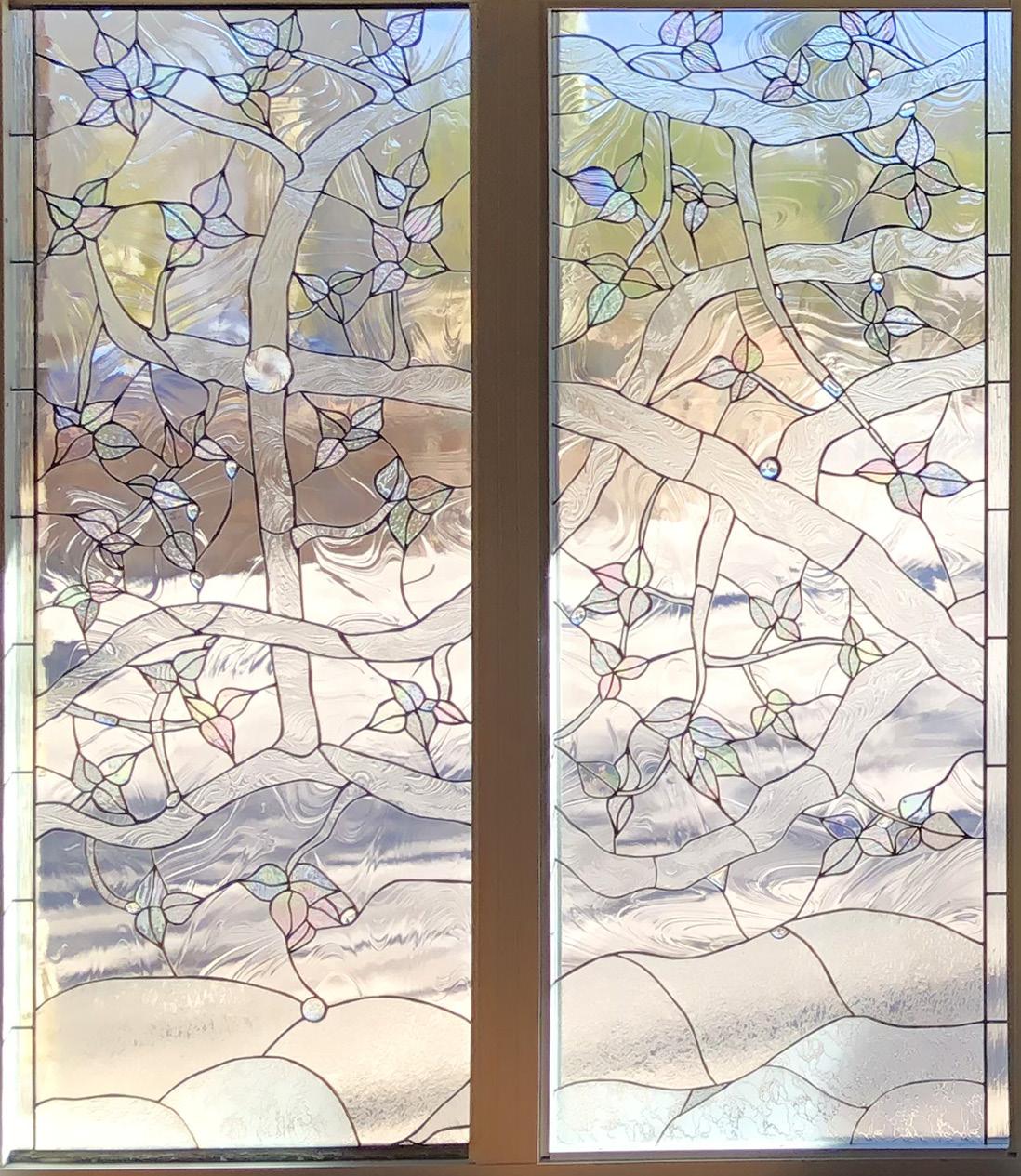
These three Tucson church projects were immensely rewarding and led me back to my military roots. I’m currently working with a military chaplain to design and construct a
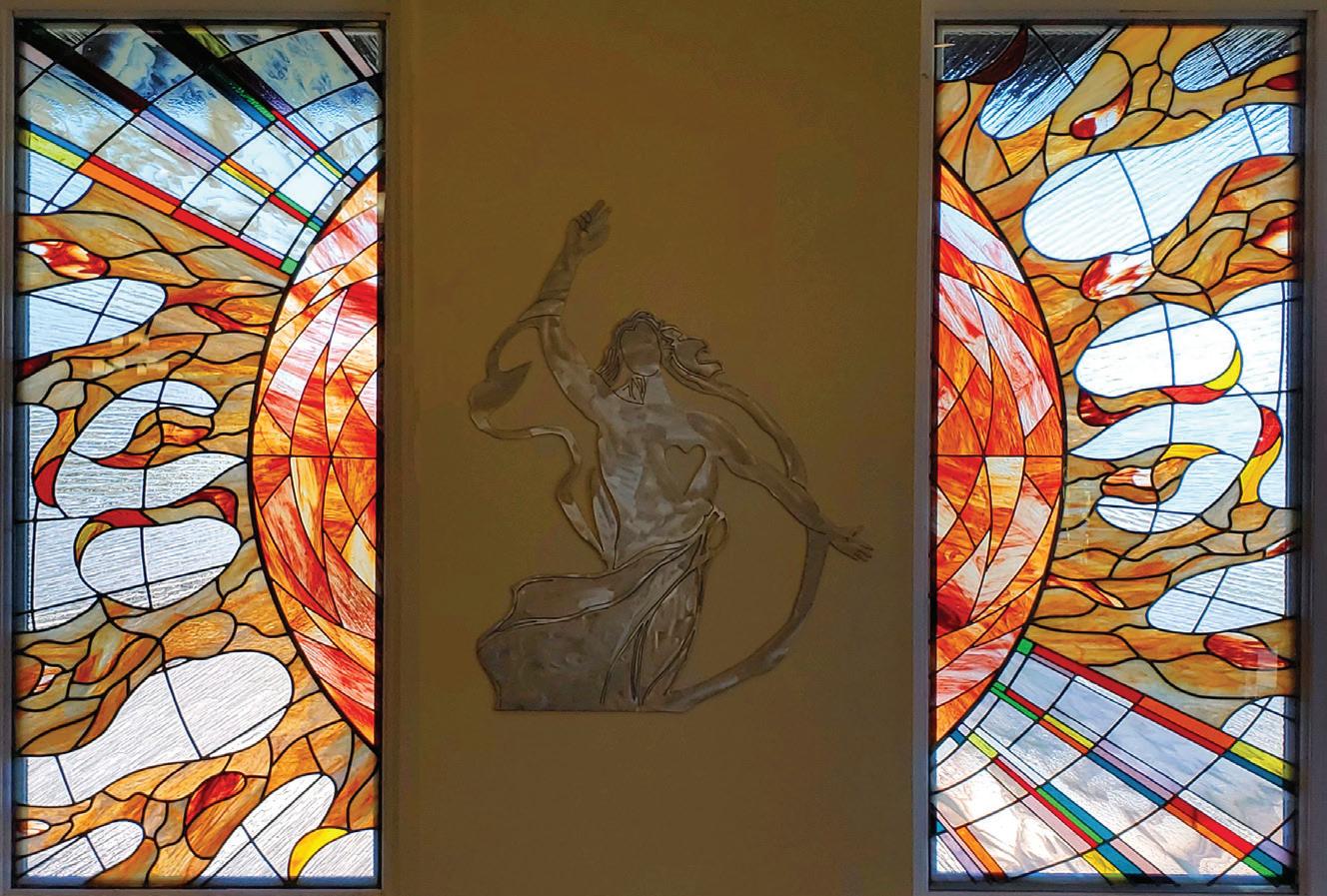
glass panel for a historic militarybase chapel beautification project. I hope to deliver a meld of glass and light designed to inspire current and future soldiers and airmen who serve at this joint base.
Each of these stained glass projects has been an unexpected blessing. Knowing your labor is appreciated and will continue to beautify a sacred space long after you leave this life is humbling and impactful. God’s comfort and guidance works through the hands and labor of many! A
GREG GHERING
ave you ever imagined yourself running to the empty tomb on that original Easter morning?
HFor me, the scene starts with disbelief. I am told the tomb is open and the body of the Lord is not there. Is this really true? After the horror of Jesus’ torture and death, I want to believe he has actually risen—but I hesitate to get my hopes up until I can see the tomb myself. So I start running there with the others who have heard the news.
From afar, I can see the tomb—and it’s open! Both hope and doubt rise in me. I pick up my pace and sprint the rest of the way. I need to know. I barely catch myself against the opening of the tomb, panting for breath, my heart racing. Peering inside, I see there is no corpse, and skeptical thoughts rush through my mind: Somebody is playing a trick. It can’t be.

I believe we’re to invite God into the aftermath of a painful situation and open ourselves to what he will do with the mess .
GREG GHERING
THE SECOND BREATH PODCAST
For a moment, my mind is clouded with doubt. Then I notice the burial cloths—they’re neatly arranged and set aside. No grave robber would bother to do that. And did someone just say something to me?
I come to my senses, and this time I catch the words, “Why do you seek the living one among the dead?”
This imaginary scene is so vivid to me because the emotions are real. There’s despair at the outset that threatens to overtake my hopeful expectation. But then, the feeling of despair changes to overwhelming hope when I learn the truth—Christ is risen, indeed! I personally know each of these feelings. The despair comes from the pain of something I wish had never happened. I’m convinced each one of us has endured similar
pain and despair. Yet at the same time, Jesus’ resurrection shows that, despite the efforts of evil, all things will be made new through him.
I desire for everyone to listen to the hope offered by Christ’s resurrection. To help in my small way, I’ve created a project called The Second Breath Podcast. The podcast series features conversations with guests who tell their story about how they are experiencing the hope and healing of the resurrection after going through terrible pain.
There are many stories in the series, all of them inspiring. Among them, there is a young man living with chronic injuries from a suicide attempt, who with Christ’s help, re -

fuses to give into despair ever again. There is a mother who tends to God’s creation through an animal sanctuary established in memory of her daughter, who was murdered in the Sandy Hook school shooting. There’s the story of a father experiencing addiction, who struggled to maintain family life and a career in the public eye, before allowing Jesus to break his affliction. There are other testimonies, all giving witness to the rescue mission God is on.
My own experience of trauma, combined with my professional background, inspired me to create The Second Breath Podcast . I have loved the spoken word from a young age. As a four-year-old, my favorite thing to do was listen to radio commentator Paul Harvey (followed by eating macaroni and cheese and visiting Grandma, who I’m told was glad to be on my “favorites” list, even if she wasn’t first). I also owe my dad for my appreciation of the spoken word. During his career, he spent several stints on the air with various radio stations. He has also been a lector at Mass for as long as I can remember, always taking care to convey the Scriptures in a clear and engaging manner.
When I had the opportunity in high school to explore potential career paths through an internship, I spent two semesters in a radio station newsroom, producing sound bites and writing scripts. After the internship, the station (WOOD AM/ FM in Grand Rapids, Michigan) hired me to help them for several hours each week until I left for college at Central Michigan University.
After graduating with a degree in broadcasting, I returned home to Grand Rapids to start my career, eventually finding myself back at WOOD Radio. A few years later, I moved to TV news with a role at an ABC affiliate, WZZM. When an opportunity arose to promote Catholic schools in the Diocese of Grand Rapids, I again altered my career path. The role appealed to me because it gave me the ability to share an up -
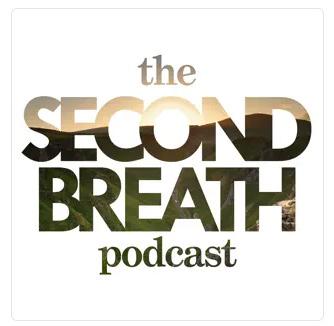
lifting message. Broadcast news, on the other hand, had felt like the opposite, and I specifically found it unpleasant to cover violent crime.
After several years of marketing Catholic school education, I made another professional shift. My current role involves serving organizations with videography, photography, and podcast production through my business, Ghering Media. If my professional background gave me the skills to produce The Second Breath Podcast, my passion for the message comes from the healing that has followed a traumatic event from my childhood.
About one week before I turned twelve, I survived a random, violent crime while delivering newspapers in my neighborhood. On a beautiful spring day, after nearly finishing my daily paper route, another youth, older and bigger, approached me, threw me to the ground, pulled a knife, stabbed me just below my right eye, and beat me. When he was finished, he simply walked away. Hearing the commotion, neighbors came out of their homes to help me and detain the young man until police arrived.
I had never seen this young man before. From the police investigation and court proceedings, we learned he needed help in his own life. The assault was a desperate act “to get taken away.” That was over twenty years ago. I hope and pray he has found healing. I’ve found healing, and I continue finding it, through
Testimonies on The Second Breath Podcast give witness to the rescue mission God is on.
Listen to The Second Breath Podcast wherever you get your podcasts.
the grace of Christ’s resurrection.
One of the first people who came to my side as I lay on the ground after the assault, waiting for my mom and the ambulance, was a woman who prayed with me. I don’t remember the words of her prayer, but I know from that moment, the journey forward was placed into Christ’s hands.
Since then, Christ’s identity as “healer” has been dear to me. The Gospel stories of Jesus offering a touch—or even just a word—to free children, women, and men from disease and death show that our Creator desires for us to be whole. This is most obvious in the resurrection. The one who took on the sin of the world—the God who died—also rose. He took the worst that evil could throw at him—death—and used it to achieve our salvation. The event of that original Easter morning triumphantly declares that death, sin, and despair do not have the last word— God does.
The physical injuries from my assault healed without any complication. I have also experienced a great deal of mental and emotional healing. In the days following the attack, I was afraid to walk down the street. Eventually, I returned to the paper route. With accompaniment from family, friends, a compassionate psychologist, and most of all, God’s grace, I could reject the temptation to hide and instead embrace the fullness of life, despite my perceived risk of venturing into the world.
Yet I know my healing will not be complete on this side of heaven. Even today, there are many times I find myself anxious and defensive because of some reminder of the assault. For this reason, I continue to prioritize mental and emotional
well-being, meeting with a therapist to maintain a healthy view of the world. I wholeheartedly encourage all who are struggling to pursue this type of care. Doing so is an act of courage, nothing to be embarrassed about or ashamed of.
The resurrection remains my point of reference throughout the long journey of healing. It shows that the claims of evil have no lasting power. We are destined for everlasting life with God in heaven. That doesn’t minimize the suffering we experience in this life. Nor will you hear me say, “Everything happens for a reason,” as if to construe a sin, an accident, or an illness to be the will of God. Instead, I believe we’re to invite God into the aftermath of a painful situation and open ourselves to what he will do with the mess.
In the case of my mess, I can clearly observe how God has brought together my skill set and experience of healing to invite me to make The Second Breath Podcast. We all need to hear about “second breath” moments, moments not unlike the first breath when we are born, moments when we receive the restored life Christ offers us.
Every person who has joined me on The Second Breath Podcast has helped me witness God’s tender compassion and fierce, protective love with new eyes. It is a privilege to assist in sharing their stories. I hope each guest’s insight helps others to see Christ’s light in whatever darkness may be surrounding them. That’s been true for me, anyway.
Christ is risen! A
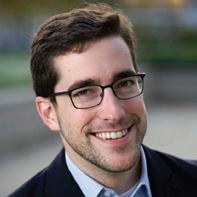
Greg Ghering of Grand Rapids, Michigan, creates videos, photos, and podcasts for a variety of clients. His communications career also includes experience in radio, television, and marketing. Greg and his wife have one child.
Mom died last fall.
These words are an abrupt opening, I know; not how columns are expected to begin. My first line is more reminiscent of Dickens’ opening in A Christmas Carol —“Marley was dead, to begin with.”
It’s important, though, to be clear that Mom passed away, and that loss has fostered all the painful feelings any of us experience when someone we love dies. Fear raised its head first when the diagnosis of my ever-healthy mother began with the words “stage four.” Confusion followed on its heels as my family grappled with the tangle of medical, financial, home-care, and hospice decisions to be made. Disbelief made a sudden showing when the interval between diagnosis and death was counted in weeks, rather than months or years. Anger and grief took their turns next, feelings that continue today for my four sisters and me; tears, blow-ups, and numbness are all part of our shared emotional language now.
Yes, Mom is dead. But just as Marley remained an integral character in A Christmas Carol, Mom remains an integral character in my story, my own “Easter Carol.” When the tears and numbness subside, she is with me in ways I never expected, evoking such joy in my life.
I’ve been visited many times since her passing, not by ghosts like we find in Dickens, but by memories and an understanding of her life—and mine—that have warmed and changed my saddened heart.
Stories of the past, offered by family and friends, have shown me glimpses of Mom’s kindness in places and with people I never knew. I didn’t know until recently, for example, how her old friends looked to her for support and care in troubled times, and how she took lonely kids under her wing when she was a librarian, promising them that, whenever they were surrounded by books, they weren’t alone.
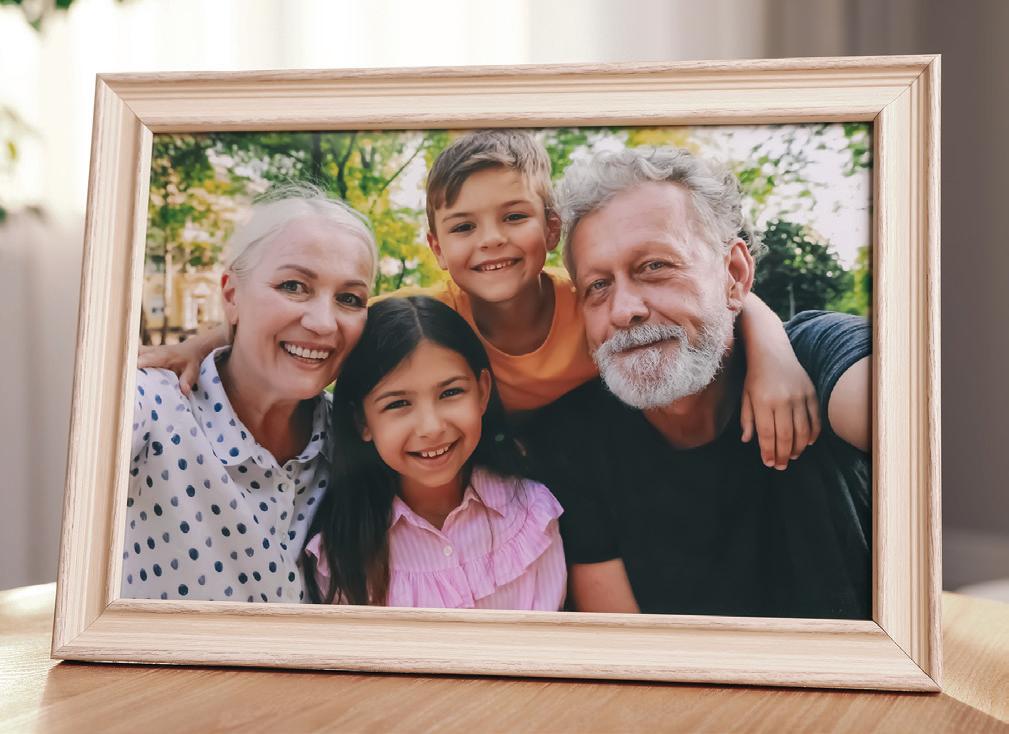
In these present days, Mom’s passing has illuminated the generosity of spirit shared by so many people who have experienced the same pain as me. Friends and colleagues who have lost loved ones and could have minimized their expressions of sympathy in order not to reopen their own wounds have stepped forward with such genuine, authentic care. I have been overwhelmed at the love that arises from loss.
In days yet to come, I will strive to do as she did—smile into the eyes of others and live by her words, “You can always be kind.” I will celebrate my mom as much as I mourn her because she lived a life of love worth celebrating.
This season of Lent and Easter is full of stories of the passion, a word derived from a Latin word that means “to suffer, to endure.” Fear, confusion, disbelief (I’m looking at you, Thomas the Apostle!), anger, grief—the same emotions we feel at the loss of a loved one echo throughout Scripture. The apostles felt Jesus’ death as acutely as I feel my mom’s. But our faith tells us that Jesus Christ conquered death, and so the Easter story is also one full of promise, celebration, and love. Love lives on.
Keep the faith, friend, in this faithful season. A
PHOTO BY NEW AFRICA/SHUTTERSTOCKIn this edition, Liguorian introduces items from The Catholic Observer, an independent news source that delivers updates relevant to Catholic readers through features, breaking news and in-depth articles. The author is Gary Gately, an award-winning journalist who has written for multiple national newspapers. Through our collaboration with Gary, we intend to inform and further educate the faithful on the global state of the Church.
The Catholic Church in the US must create a “more evangelical and missionary Church” to minister to the country’s Hispanics. The number of Hispanics in the Church has declined sharply over the past decade, the nation’s bishops said.
The US Conference of Catholic Bishops’ sixty-two-page report, Missionary Disciples Going Forth With Joy, comes after a Pew Research Center report found the percentage of US Hispanics who identify as Catholic declined from 67 percent in 2010 to 43 percent in 2022. At the same time, according to the report, the percentage of US-born Hispanics who identified as religiously unaffiliated tripled to 30 percent between 2010 and 2022.
The bishops, addressing their ten-year Hispanic evangelization plan to US dioceses, parishes, and other Catholic institutions, noted a marked drop-off in the number of young Hispanics who identify as Catholic.

The Pew report found that among US-born Hispanics between ages eighteen and twenty-nine, about half said they had no religious affiliation, and only 30 percent identified as Catholic.
To reverse the decline in young Hispanic Catholics, the bishops recommended steps at the parish level to help Hispanic parents and extended families pass on their faith to children by “forming and equipping parents to exercise their role as the primary catechists of their children.”
The report also urged US Catholics to ensure families have access to bilingual catechetical materials to eliminate language barriers.
On the upside, the report pointed out Hispanics have accounted for 71 percent of the growth of the US Catholic population since 1960, according to Boston College’s Church in the 21st Century Center. US Hispanic Catholics now number around thirty million, or 40 percent of all US Catholics.

Welcome to The Catholic Observer, your independent source of news and views on the Church. I’m Gary Gately, the newsletter’s founder and editor, and I’m so glad you found us in Liguorian and hope you’ll consider subscribing to the free newsletter or, if you’ve already subscribed, consider sharing it with others. I’m a lifelong Catholic and award-winning journalist who has written for The New York Times, The Washington Post, The Guardian, the National Catholic Reporter, America: The Jesuit Review, Newsweek, The Baltimore Sun, The Boston Globe, the Center for Public Integrity, CNBC.com and United Press International.
The Catholic Observer will deliver a rich mix of breaking news, features, profiles, and in-depth pieces that provide perspective on the news, along with investigative stories. The newsletter will also feature opinion pieces, book and movie reviews and aggregation highlighting coverage worth reading in other publications.
Liguorian will generally offer shorter news items, with links to longer versions included in future editions of the digital Liguorian I’d love to hear from you. Please email news tips or suggestions to Garymichaelgately@gmail.com. Thank you!
To sign up for The Catholic Observer newsletter at no cost or for a paid individual or group subscription, please type this line into your web browser and follow the instructions.
thecatholicobserver.substack.com
“We need to abandon ecclesial ideologies to find the meaning of holy mother Church, the ecclesial attitude—ecclesial ideologies, no, ecclesial vocation, yes,” the Pope said at a Mass celebrating the Epiphany at St. Peter’s Basilica.
Amid global divisions over blessings of same-sex couples, Pope Francis has warned against “splitting into groups” and urged the faithful to “live in harmonious union.”
“We need to abandon ecclesial ideologies to find the meaning of holy mother Church, the ecclesial attitude— ecclesial ideologies, no, ecclesial vocation, yes,” the Pope said at a Mass celebrating the Epiphany at St. Peter’s Basilica.

“Let us set out anew from God. Let us seek from him the courage not to lose heart in the face of difficulties, the strength to surmount all obstacles, the joy to live in harmonious communion.”
The pontiff did not specifically refer to the rift over priests’ blessings of same-sex couples, but broke from the text of his homily to speak of the need to abandon “ecclesiastical ideologies.”
Francis’ homily came two days after the Vatican defended his approval last month of non-liturgical blessings of same-sex couples, saying they were neither “heretical” nor “blasphemous.”
The Vatican has reaffirmed Church teaching on marriage as a lifelong union between a man and a woman, and stressed that same-sex blessings must not be linked to a Catholic celebration or service.

For the first time in eighty-three years, the US Catholic Church will celebrate a National Eucharistic Congress in July, bringing together an expected 80,000 people to Indianapolis to contemplate and celebrate Christ’s Real Presence in the Eucharist.
The faithful will attend group breakout and prayer sessions and come together each evening to transform the Indianapolis Colts’ stadium into a venue for this enormous religious revival.
Many of those who attend will journey hundreds of miles along one of four Eucharistic Caravans, stopping at holy sites along the way before converging on Lucas Oil Stadium for the five-day conference, from July 17-21.
The tenth such gathering of clergy, other religious figures and laypeople, and the first since 1941, will mark the culmination of the US bishops’ three-year National Eucharistic Revival.
“Our world is hurting,” the Revival’s website says. “We all need healing, yet many of us are separated from the very source of our strength. Jesus Christ invites us to return to the source and summit of our faith in the celebration of the Eucharist. The National Eucharistic Revival is a movement to restore understanding and devotion to this great mystery here in the United States by helping us renew our worship of Jesus Christ in the Eucharist.”
Scheduled speakers include some of the most influential figures in American Catholicism. Among them: Bishop Robert Barron of the Winona-Rochester (Minnesota) diocese and founder of the popular Word On Fire website; Christophe Cardinal Pierre, the Holy See’s ambassador to the US; author and professor Fr. John Burns of the Archdiocese of Milwaukee; Sr. Bethany Madonna of the Sisters of Life; and Mary Healy, Scripture professor at Sacred Heart Major Seminary in Detroit, bestselling author and international speaker.
ALBERTO PIZZOLI / GETTY IMAGESThere is an ancient story of a rabbi who gathered his students together early one morning while it was still dark. He had an important question to ask: “How can you tell when night has ended and day is returning?”
One student answered, “Could it be when you see an animal and can tell whether it is a sheep or a dog?”
“No,” replied the rabbi. Another student said, “Could it be when you look at a tree in the distance and can tell whether it is an apple or peach tree?”
“No,” answered the rabbi. After a few more guesses, the students demanded the answer. The rabbi responded, “It is when you look at the face of any woman or man, and see she is your sister and he is your brother. Because if you cannot do this, then no matter what time it is, it is still night.”
The Easter we celebrate is an invitation out of darkness into the light of the risen Christ. In that light, we see him and recognize each other as brothers and sisters in the Lord. It is that light which enables us to know when night has ended and day is coming back. It is that light which summons us to stop loitering in darkness. Rather than focusing on death, it calls us to look for hope elsewhere. When Jesus conquers death, nobody and nothing can be written off as a lost cause ever again.
In today’s world, this message needs to be proclaimed boldly and in full voice. Christians, all who celebrate the resurrection of the Lord, are challenged to proclaim the truth of the gospel. It may well be a difficult challenge to fulfill. We live in a world where the cruelty of war, the sudden carnage of terrorism, and security threats grab our attention. Even leadership remains perplexed over these situations. We see millions of people being born, living, and dying in circumstances and conditions that limit their ability to enjoy the fullness of life. Poverty, disease, and violence are ordinary experiences for many.
Countless individuals live with promises of a full life but are quickly abandoned and forgotten because of old age, mental conditions, or not being successful or talented enough. Increasingly, our brothers and sisters are left behind, and all hope is taken away from them because of technology, downsizing, or other myriad possibilities in our techno-culture. In such cases, it is difficult to proclaim that we are the people of light. It is difficult to believe we live in the fullness of life when we are surrounded by such

We must proclaim the hope and joy of Easter—boldly!MIKE PELLINNI / SHUTTERSTOCK
darkness. Some days, we question whether there is enough light to recognize all of our brothers and sisters.
Easter is not meant to be discouraging. Decorations, the Easter liturgies we celebrate, and our family gatherings all stand in stark contrast to the reality we tend to identify as difficult and dark. In order for the beauty and light of the paschal candle to shine through, we must be able to see through the darkness a glimmer of hope for something more, the possibility for change and fullness of life for everyone.
One place I look for that hope and life is in my brothers and sisters. This is the lesson the rabbi shared with his students. No one with self-awareness would ever choose darkness over light. I do not believe any of us would refuse to extend help to brothers and sisters in need or provide hope to someone hidden in the shadows.
We are each willing to do this because we believe in life. We believe in the power of God, in the words we share when celebrating the Eucharist. We believe in a God of abundance who has gifted each with more than enough. We are filled with gratitude, and with this grace, we become people willing to share our abundance with those who have nothing.
Ultimately, it is this belief that makes Easter joy and Easter hope a sign of God’s powerful presence in our world today. May God bless and fill us with an abundant portion of the new Easter life we celebrate when we shout “Hallelujah!” and sing Easter hymns of joy. A
Fr. Thomas M. Santa, CSsR, is the publisher of Liguorian
When I first began discerning my vocation with the Redemptorists, I attended a “Come and Pray” weekend in Philadelphia, where I met my best friend, John, who was also attending the event. We clicked immediately, and before parting ways that weekend, I asked for his social media information. We became connected by our common vocation, and through social media, we journeyed together as young men who were sharing and living out our faith.
Throughout my discernment, John has been someone I go to for prayers, advice, and random conversation. When I joined the Redemptorists’ formation program in 2021, John and I met in person again. Even though this was the second time we had met face to face, that online connection had given us a head start on forming a friendship that was built on understanding, acceptance, and care.
Humans are naturally social, but often we find ourselves lost in a sea of people because we can’t relate to one another or find someone who “clicks” with us. This is how I felt growing up in a primarily Hispanic area. At school, I was often the only student of Vietnamese, or even Asian, descent. I made friends amongst my classmates, but I never truly connected with anyone who looked like me and shared my interests. It was only through that chance meeting with John far from home and the power of social media that helped me find and maintain a lasting friendship through the ups and downs of life.
Over the years, John and I have been integrated into each other’s lives through our families, benefactors, supporters, and friends. I spent one summer working at St. Alphonsus “Rock” Church in St. Louis, where John had worked the summer before. We shared the same formational experience, but we met and worked with different groups of people.
ANDREW TRAN-CHUNG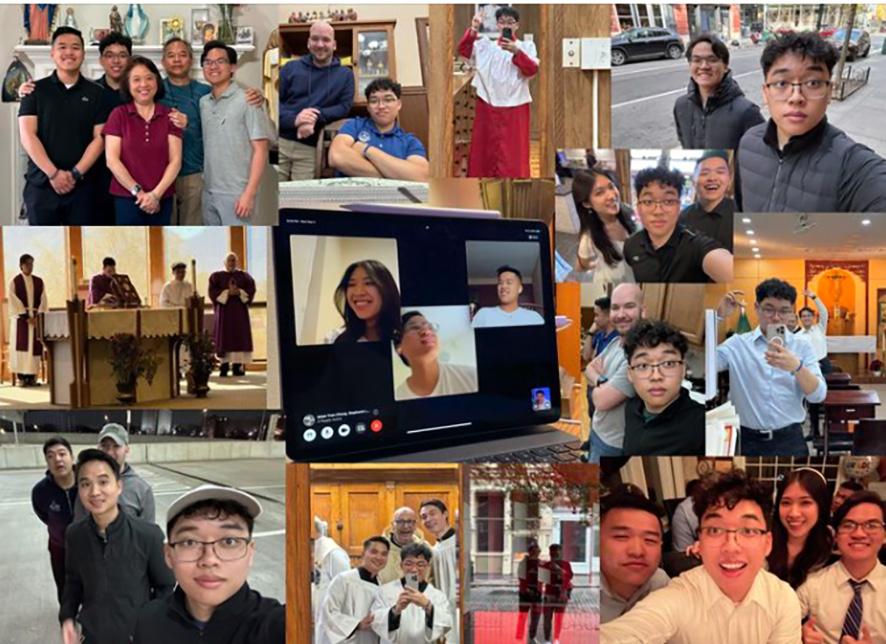
Social media has the power to maintain the web of relationships we have, even when physical distance grows. The ability to connect with people we may not be close to through a “Congratulations!” comment on a post, or a “How are you?” in a text message reminds us that we are still journeying together as time goes on.
I sat down with John at my parents’ house last year after he graduated. I told him that while we may not be living in the same community anytime soon, our shared experiences and vocation would continue to be the invisible string that ties us together. Our families, encounters, and interconnected web of relationships would help us maintain a firm friendship, with social media lessening our physical distance.
Now, John and I send each other pictures of things and places we see. It might seem trivial, but these small interactions give us a little window into each other’s lives. I’m ever so grateful for the gift of social media, because these moments are only possible due to the incredible technology that reminds us we are not alone. We do have people to share our lives with; someone to journey with us. Those check-ins help us feel as if we’re sitting together in a coffee shop, chatting like we’re not thousands of miles apart. A
Asked to corroborate belief in the Real Presence of Christ in the Eucharist, most Catholics would unhesitatingly point to the words of our Lord at the Last Supper as recorded in the three synoptic Gospels (Matthew 26:26–29, Mark 14:22–25, and Luke 22:14–20). So where is the Gospel of John? He has more to say about the Eucharist than any other evangelist; he simply doesn’t write about it in the context of the Last Supper.
John uses the feeding of the multitude and Jesus’ stroll on the lake to set up an original scenario, one whose eucharistic dimension expands and deepens as the story unfolds. John tells us that Jesus suggests a nobler incentive. “Do not work for food that perishes but for the food that endures for eternal life, which the Son of Man will give you” (John 6:27). Eternal life is a major theme in John. Here, he connects it to bread, suggesting that just as the bread they ate on the hillside the day before nourished their bodies in this temporal life, so the bread Jesus will provide will nourish their souls for eternal life.
The mention of manna then takes it up another notch, leaving everyday table bread behind and moving to the original God-given bread, manna. Jesus tells the crowd, “It was not Moses who gave the bread from heaven; my Father gives you the true bread from heaven” (John 6:32). Jesus refuses to settle for that and prods his audience to be receptive to a new idea.
“I am the bread of life. Your ancestors ate the manna in the desert, but they died; this is the bread that comes down from heaven so that one may eat it and not die. I am the living bread that came down from heaven; whoever eats this bread
will live forever; and the bread that I will give is my flesh for the life of the world” (John 6:48-51).
Bread, the most common foodstuff throughout the ancient world, has now been elevated to an unimaginable stature. Christ, emphasizing his divinity, offers to share himself personally with human beings.

“Then many of his disciples who were listening said, ‘This saying is hard; who can accept it?'” (John 6:60). “As a result of this, many [of] his disciples returned to their former way of life and no longer accompanied him” (John 6:66). Jesus never calls back to those who walk away from him. He stands by his extremely explicit statements, the most clear-cut eucharistic teaching in any Gospel. Even today, some Catholics find it impossible to take Jesus’ words at face value. Will you instead follow Peter’s declaration? “We have come to believe and are convinced…” (John 6:69). A
Meditate on the Bread of Life Discourse:
1 When was the last time you explored your attitude toward the Eucharist?
1 How does the reception of the Body and Blood of Christ in the Eucharist affect your daily life?
1 After receiving the Eucharist at Mass, do your thoughts return to the Christ you carry into the world throughout the day?
Source: Scripture from Scratch: “Jesus, Bread of Life” by Virginia Smith, originally published by Franciscan Media in March 2001.
Here’s a question worth pondering: What did it feel like for Mary to suffer?
We know what suffering feels like in our own lives, but for us, the experience is sometimes—or often—tied to sin. When we’re wounded, we lash out. We meet suffering with rage, or blame-shifting, or scapegoating, or any one of a host of other human failings. What would it be like to suffer without giving in to sin?
For me, as a mother of boys, it’s hard to imagine. After all, I know how hard it is for me when my children are in pain. Mary’s Son was rejected by those he grew up with. Religious leaders tried to trick him into speaking heresy. Political figures plotted against him. People called him crazy. How can a mother cope with such pain? Surely when Jesus challenged religious authorities, Mary must have longed to cry out, “No, honey! Don’t do that! Don’t you know what will happen?”
She didn’t say anything because she knew Jesus was doing his Father’s work. He knew the cost. Even so, it had to have been agonizing to remain quiet, seeing where his actions must inevitably lead.
And then came the passion. Can you imagine what she must have felt, meeting Jesus along the road to Calvary? Let alone standing at the foot of the cross? I can’t. I have nothing to compare it to. My own daily sufferings pale by comparison.
And yet, somehow, I respond with petulance and resentment. With shouts and recriminations toward those I love most.
I know I’m not alone.
Why do we do this? Perhaps it’s because those sinful behaviors allow us to deflect a portion of our suffering. To anesthetize our pain, to cover it up, to push it onto someone else.
Mary, free from sin, never availed herself of that crutch. So what must suffering have felt like to her?

Sinful behaviors allow us to deflect pain onto someone else. Mary, sinless, never did that.
Maybe the answer is simple: she really felt it. Every last, terrible drop.
Just as her Son did.
Jesus, too, had no sin to use as a drug to dull the pain of his passion. He felt every bit of his pain, and not just physically, but emotionally and spiritually. That’s what it means to be fully human.
So maybe, when we find sanctification in suffering, it comes in proportion to how well we model Mary and Jesus, who embraced instead of trying to escape any part of their own pain. A
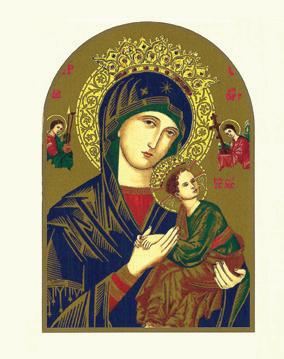

“O
God of creation, compassion, crucifixion, resurrection, and redemption, stretch my faith and enlarge my hope to the point that I can fully embrace the power of the resurrection.
By the power with which you raised Jesus from death, raise within me courage, integrity, dreams, joy, forgiveness, faith, grace, and peace that I may know life. Grant that I may experience in this season of resurrection: promises kept, relationships restored, dreams realized, and death that gives way to new life. Enable me to follow the risen Redeemer and to witness to others the joy of abundant life. Alleluia! Amen.

O God of loveliness, O Lord of heaven above, How worthy to possess my heart’s devoted love.
So sweet thy countenance, so gracious to behold
That one, one only glance to me were bliss untold.
To think Thou art my God—Oh thought forever blest!
My heart has overflowed with joy within my breast.
My soul so full of bliss, is plunged as in a sea,
Deep in the sweet abyss of holy charity.
O loveliness supreme, and Beauty infinite,
O ever flowing Stream and Ocean of delight,
O Life by which I live, My truest Life above,
To Thee alone I give my undivided love. Amen.
Good God, help me to live daily in the light of the glory of your victory in Jesus Christ, a victory over sin and death and all that destroys human life. Draw me by the power of that victory to live victoriously and confidently, even in the midst of trials and suffering, to know that you are faithful and your goodness is with me at all times. Alleluia! Amen.
LENT AND EASTER WISDOM FROM ST. ALPHONSUS LIGUORI, COMPILED BY FR. MAURICE J. NUTT, CS S R, © 2011 LIGUORI PUBLICATIONS (819889). DONATAS DABRAVOLSKAS / SHUTTERSTOCKThe word shepherd is printed in the Bible forty-three times. But today, how often do we think about the people who tend flocks? Does the word still refer to green pastures and those guarding herds of four-legged animals, or does it apply to artificial turf and two-legged kickers?
For example, before you ask Australians what they think about “shepherding,” you may want to brush up on their current rules for Australian football. Similar to “blocking” on the American gridiron, “shepherding” in the Down Under sports arena typically involves players using their whole torso to stop an opponent from tackling a teammate or gaining possession of the ball. Like the biblical shepherds, a shepherding player is attempting to safeguard, intervene, and rescue from certain loss. In fact, a player’s most effective shepherding technique requires him to use his full body weight and outstretched stiff arms.
Does such a shepherding image mirror Christ with outstretched arms on the cross? Strangely enough, the idea of defending a teammate and the reality of spiritually caring for faithful followers is a closer match than we might think.
During the season of Lent and Easter, we recall the suffering, death, and resurrection of Jesus. However, we might also recall why our Lord is known as the Good Shepherd. Whenever the Bible mentions shepherding, the scenario is one of caring, leading, protecting, and acknowledging the close bond that exists between the shepherd and his sheep.
Jesus, the Good Shepherd, is often portrayed carrying a lost lamb across his shoulders in order to return the wayward stray back to the flock. These are the same shoulders that bore the weight of the cross on the hill to Calvary.
Holy Homework
FR. BOB PAGLIARI, CS S R, PHD
The image of an Australian football player shepherding closely matches that of Christ the Good Shepherd.
Whether carrying lost sheep or lost sinners, their weight is internally excruciating—a word derived from the Latin term ex cruce, meaning “from the cross.” Nevertheless, the burden on Jesus’ shoulders confirms Christ as our “Savior Shepherd.” He cares for us so completely that he would leave ninety-nine faithful grazers to untangle us from the thorny clutches of evil.
We are the lost sheep. Jesus is our rescuing shepherd. Whether we are bleating in sorrow or bleeding to death, he loves us enough to stoop down, lift us up, and carry us sturdily on his shoulders from this valley of tears to the heights and happiness of everlasting life. A
Let’s post two pictures in plain sight during March and April. One picture should be of Jesus the Good Shepherd, and the other should be a picture of Jesus carrying the cross. Each time we pass by these images, let’s promise to be better sheep. We can do this by pledging to listen to and obey the voice of the heralding Shepherd who is calling us to follow him as he leads us to our heavenly home.
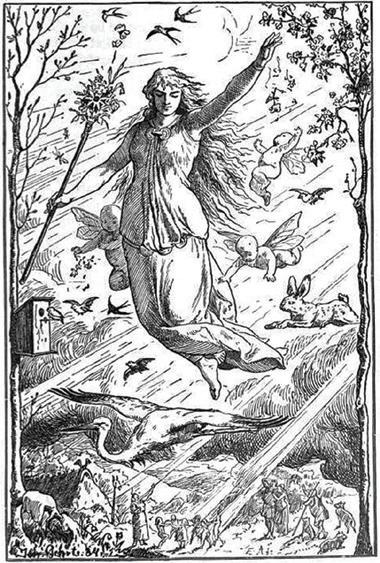
Easter is on March 31, 2024. (YOU KNEW THAT, RIGHT?)
But did you know that the English word Easter is derived from a pagan holiday honoring Eôstre , goddess of spring and rising light?
The celebration happened in the early spring.
Variations of the word Easter : Anglo-Saxon: eaester
Old High German: ôstra
“The Bible tells us to love our neighbors, and also to love our enemies; probably because they are generally the same people.”
G. K. CHESTERTON (1874–1936)
The second Sunday of Easter was officially designated as “Divine Mercy Sunday” in the year 2000 by Pope St. John Paul II. This feast day celebrates God’s infinite mercy and love for us. Jesus’ desire for us to observe a day dedicated to his unending mercy and forgiveness was revealed to St. Faustina Kowalska , a Polish nun who received revelations from Jesus about God’s mercy and was canonized in 2000. The popular Divine Mercy image reminds us to trust completely in Jesus and be open to receiving his abundant graces.

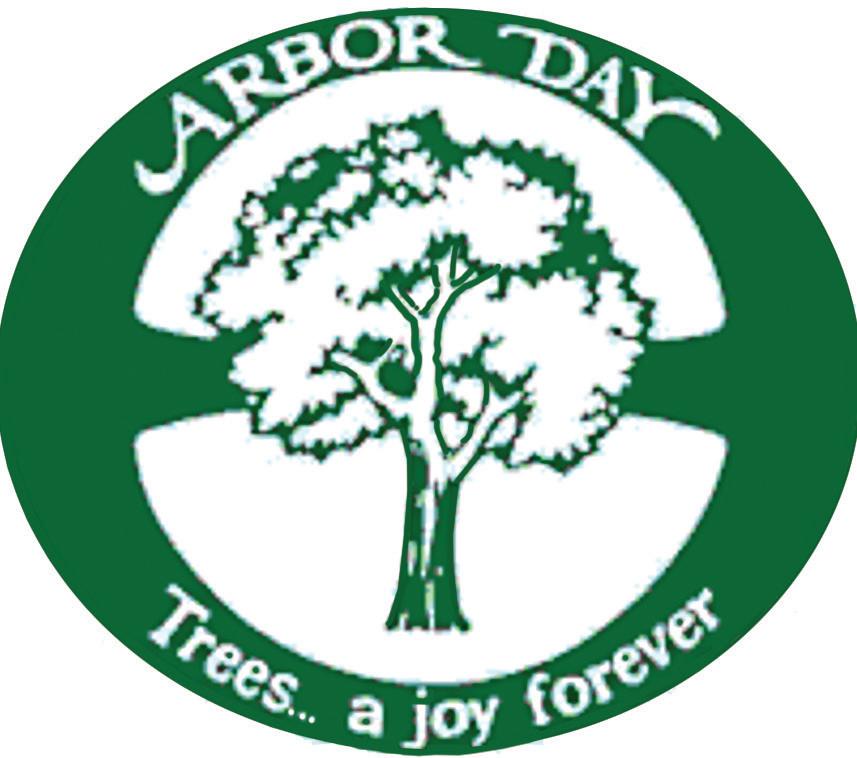
Arbor Day, an annual national celebration, started in Nebraska in 1872 to encourage residents to plant trees on the empty plains.
In 2024, Arbor Day is on April 26.

Opening Day 2024
The first Major League baseball games in Seoul, South Korea, swing into action March 20–21 with the Padres and Dodgers.
Opening Day 2024 in North America is March 28 , before Easter, a rarity.
Lines from And God Said, Play Ball!:

“Methusela was my first bat boy” (Satchel Paige).

“I can make a living telling the truth” (Casey Stengel).

This year we celebrate Divine Mercy Sunday on April 7.
“The field is the world” (Matthew 13:38). GARY
• During Lent, attend Stations of the Cross celebrations weekly.
• Also during Lent, take time each day to meditate on the sufferings of Jesus.
• Dust off or buy a crucifix and place it in a prominent location in your home during Lent and Easter to use as a reminder of Christ’s ultimate sacrifice for us.
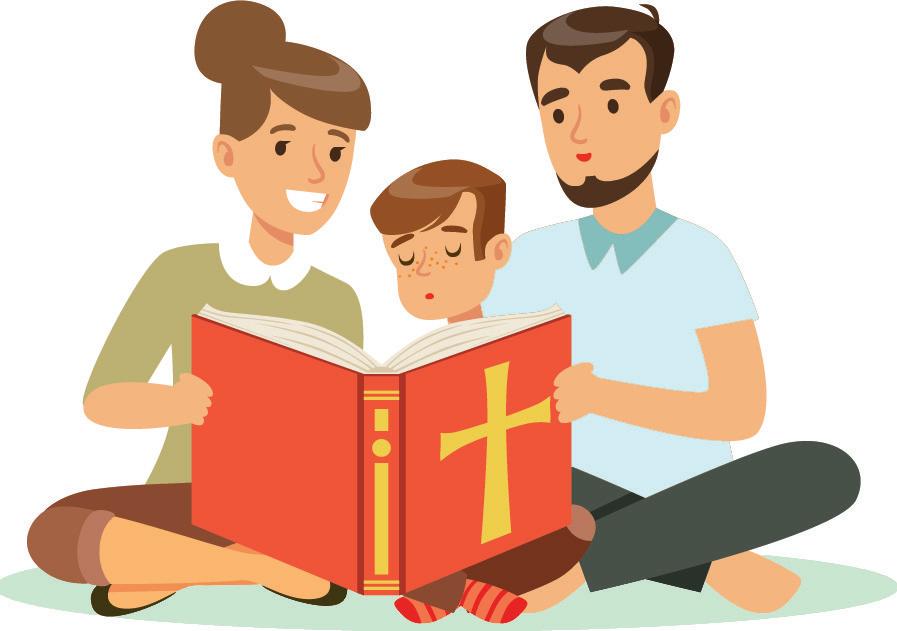
• Choose a joyful Scripture quote as your motto for the Lent and Easter season.
• Create a list of the things that make you joyful in life and put it on your refrigerator as a daily reminder. Point it out often to your family.
• In this season of forgiveness, reach out to someone you’ve had trouble forgiving and extend a branch of renewed friendship.
• Send religious Easter cards to family members and friends who are unable to celebrate with you.
• Donate candy and toys to a children’s center.
• Volunteer at a homeless shelter or soup kitchen.
• Have fun and dye Easter eggs with children or grandchildren.
• Pray the Divine Mercy Chaplet for deceased family members.
• Bring fresh flowers to the gravesites of deceased family members and friends.
• Buy Easter lilies for your parish or home.
• With spring cleaning time upon us, clean out your closet, cabinets, and basement, and donate clothes and other household items to a charity that helps the poor.
• Buy or plant spring flowers to add joyful color to your home.


• If you’ve never or rarely attended an Easter Vigil, go to one this year.
• If you take a spring vacation with children, be sure to stop at a local church and attend Mass together, especially on Sundays.
• Even though fasting ends after Lent, consider giving up something monthly thereafter as a reminder of Christ’s sacrifice for us.
• After Easter, take time each day to meditate on Jesus’ resurrection and what it means to you and those you love. Then share your thoughts with your loved ones.
COMPILED BY THE STAFF OF LIGUORI PUBLICATIONS
• Lent and Easter Wisdom from Pope Francis by John Cleary (826474)
• Change Our Hearts: Daily Meditations for Lent by Rory Cooney (367251)
• The Women of the Passion by Kathleen Murphy (816475)
• Easter Bunny’s Amazing Day by Carol Benoist and Cathy Gilmore, illustrated by Jonathan Sundy (823534). Spanish: El Conejito de Pascua, El Cuento de un Día Extraordinario (824562)
For more information and to order, call 800-325-9521 or visit Liguori.org.
ILLUSTRATIONS: SHUTTERSTOCK

AROUND THE TABLE
Ingredients
2 pounds asparagus
4 tablespoons low-fat plain yogurt
6 sprigs Italian parsley, chopped
2 tablespoons fresh lemon juice
6 mint leaves
2 tablespoons olive oil
6 sprigs chervil, chopped
Salt and freshly ground pepper to taste
Small bunch of fresh chives, chopped
1. Cook the asparagus standing, tips up, in about three inches of water. Cover the pot and let them steam for about seven minutes. Drain the asparagus and place it on a large platter.
2. Prepare a sauce by combining all the remaining ingredients in a blender. Blend thoroughly. Taste and check the seasonings. Pour the sauce over the asparagus and serve immediately.
SERVES FOUR TO SIX
Source: From a Monastery Kitchen, © 2002 Brother Victor-Antoine d’Avila-Latourrette (808500, Liguori Publications). To order, visit Liguori.org or call 800-325-9521.
JULIALAVLEIS / SHUTTERSTOCK
Scholars call St. John Cassian (circa 360–435) an eloquent interpreter of the early monastic movement that originated in the deserts of Egypt and Palestine. After he was ordained a deacon by St. John Chrysostom in Constantinople, he sojourned for several years in the desert, where monasticism was flourishing at the time. Drawing on his own monastic experience, he journeyed to the West, settling in Marseilles. In France, he transmitted the monastic tradition in all its original purity to the people until his death.
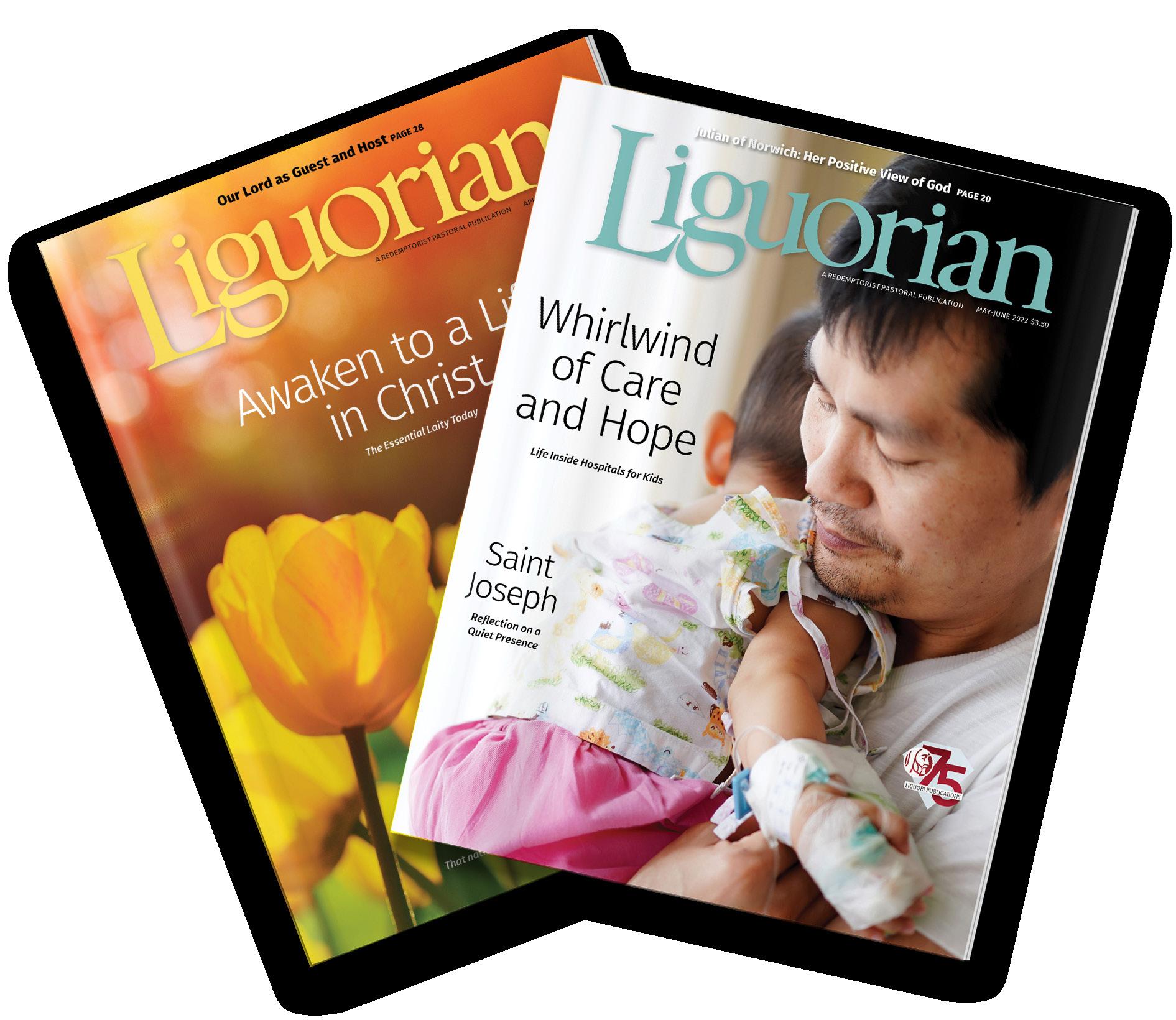



When they arrive for her son’s eye exam, they must first endure an interval of waiting room choreography. They sign in, take their seats, and become part of the scene. It never varies. People come, people go. People request the restroom key, disappear, and return. A home improvement show plays on the mounted television but no one pays attention.
Out-of-date magazines get fitfully paged, then discarded. A side door opens, a name is called, one or two people scramble to their feet. Those remaining watch, as the tech ushers them through the door, wondering, Am I next?
While Jonquil Bloom waits, her heart pounds. She has taken the day off from work to be here. Her throat is parched, but her water bottle is in the car. She licks her lips and swallows hard. This must be a foretaste of purgatory, she thinks.

Her son Billy (a teen who prefers “Bill”) sits two chairs over, texting. Since he started high school, he is never without his mobile phone, his parents’ concession to the general free-floating anxiety unleashed two years ago by the events of 9/11.
Bill, age sixteen, has the features of a teenage heartthrob—a lean, compact body topped by a sturdy neck and handsome face. His childhood buzz cut has sprouted into a thatch of brown hair that curtains his forehead until he coolly pushes it back from his face, revealing the haunted look in those gray-blue eyes.
Even though Bill earned a spot on the varsity baseball team this year, his passion since fourth grade, he gave it up. With the onset of the disease affecting his eyes, his enthusiasm for sports and other extracurricular activities has steadily waned. While he has his learner’s permit, he shows no desire to drive. Increasingly, he is withdrawn, whether as a normal consequence of teenage angst or the disease, his mother can’t say.
Jonquil feels torn; on the one hand, she is relieved Bill doesn’t want to drive yet, but she knows overcoming his fear is vital to his future happiness. Her heart yearns to comfort him.
What will today’s exam reveal?
She closes her eyes and prays for a good outcome, but her palms feel clammy. Her mind can’t forget the symptoms of pseudotumor cerebri he showed five years ago—agonizing headaches due to excruciating eye pressure, blurred vision, nausea; the traumatic, however temporary, loss of vision. Since then, his follow-up appointments have been twice a year. Bill seems fine today, but is he keeping anything from her? A light tap on her knee prompts her eyes to flutter open.
“I made this for you, Mama.”
Into her hands is thrust a sheet of construction paper covered with riotous squiggles of blue, red, yellow, and green. Jonquil, employed as a gift counselor at a local department store, never tires of Lizzy’s spontaneous gifts.
Four-year-old Lizzy stands before her dressed in her favorite pink tutu petti-skirt and matching sparkly shoes. A ribbon dangles precariously from her mussed strawberry blond hair. She throws a sideways glance at her brother, and he shoots her back a loopy grin.
Jonquil relaxes in her seat as the sight of their sibling bond warms her heart.
“Guess what it is, Mama!” the child demands imperiously. Jonquil holds up the paper carefully, knowing Lizzy is about to throw her upper body with total abandon against her mother’s knees.
After the impact, Jonquil shifts her body to a more comfortable position as she peers intently at the drawing. “Hm. I know you like flowers…. Is this a flower?” She shows Lizzy where she is pointing.
“Mm-hm.”
“What’s this?”
“A butterfly and a rainbow, too.”
“I love it. How about when we get home, we’ll hang this up on the fridge for Daddy to see?”
“OK!” cries Lizzy, who claps her hands, launches off Jonquil’s knees to stand up straight, and then spins around on one foot. Her movements flow into one another like an effortless dance. She must have inherited her natural gracefulness from Claude, muses Jonquil, suddenly realizing people are staring at them.
Just then a door opens and a voice calls out, “Billy Chappel?”
Jonquil gives the tech, whose face is unfamiliar, a nod. Quickly, she shoves the coloring paraphernalia into her tote bag and takes Lizzy’s hand before trooping behind her son into the inner offices.
At first, Lizzy sits on her mother’s lap, content to watch the tech administer the preliminary screening in the dimly lit room. She has been here once before and knows the drill: no suckers are given out, like at her doctor’s office. However, if she behaves, they will stop for a treat on the way home.
The tech asks Bill if he’s having any symptoms, and
he answers, “No.” The disease, a pressure in the brain, mimics a tumor as it impinges on the optic nerve. If it is not quickly relieved, it can lead to permanent blindness. It required hospitalization when Bill was eleven. Fortunately, he responded to treatment before surgery was needed. Since then, he has been followed by both a neurologist and ophthalmology surgeon. The disease can return with little warning, which explains why, despite Bill’s clean “bill” of health earned at each appointment, the dread of relapse never goes away.

“Can Billy drive the car home?”
The tech asks Bill to cover one eye and then the other with a spatula-shaped occluder and then has him read the wall chart across the room. Next, she checks his eye pressure using a different apparatus and types the results into the computer on the desk.
“Looking good, Billy,” she comments.
“It’s Bill,” her son says calmly before Jonquil can speak up.
“Thank you for letting me know. I’ll update your file.”
Bill winks at his mother and her spirits rise. As they wait, Lizzy can’t sit still. She is missing her nap, which is probably why she’s fidgety. Jonquil prefers not to bring her here, but the baby-sitter’s car broke down, leaving her no choice.
Apologizing to Dr. West as he enters the room, Jonquil stands and ushers her daughter out into the corridor. Nearby, a small alcove offers cushioned chairs and a smaller, muted television. Lizzy seems relieved to be out of the dark exam room, but Jonquil is not. She wants to hear every word. To get her mind off her disappointment, she retrieves her Blackberry from her purse and calls her husband, Claude.
“Bonjour, mon chéri.” His sunny greeting puts a smile on Jonquil’s face. Claude is French Canadian and has started his own construction company. “So glad you called. How’s it going?”
At that moment, Bill, whose eyes have been dilated, joins them and takes the seat farthest from her.
“Bill is in between tests. I just called to say hi.”
“And the baby?”
“I doubt Amy Elizabeth would like the sound of that.”
He chuckles, and Jonquil can feel him smiling. “Alors , I have to let you go.” They exchange a loving “goodbye” before she disconnects.
“How are you feeling, honey?” Jonquil asks her son.
Bill shrugs and avoids her. Instead, he reaches out his arms for Lizzy to come to him. He sets her on one knee and bounces her up and down, playing pony ride until the corridor rings with her joyful shrieks.
The tech appears in the doorway. “Bill, ready?”
Gently, he sets Lizzy on her feet and follows the tech out of the room.
“Bye, bye, Billy,” cries Lizzy.
Seconds later, he pops his head back in, points to her, and says, “It’s Bill, you silly,” before he disappears again, setting off more gales of laughter.
Jonquil sees Bill’s blatant devotion to his sister as a sign that the loving boy he was before the illness is still there somewhere inside of him. Yet Bill’s detachment from Jonquil is painful, and more than once, she has considered getting him into therapy. They used to be so close. Her first husband, Bill’s father, died months before Bill was born, and so her son became her whole life. When Jonquil began her psychology studies in graduate school, young as he was, Bill became her interested, uncomplaining audience with whom she shared her classwork and caseload. They supported each other through the hard years of loneliness and fatherlessness.
By the time Claude came along, Bill wanted a dad and Claude wanted a family, so the two of them quickly formed a tight bond. After the wedding, Claude adopted her son, a true blessing; Claude himself had been adopted when he was a toddler.
Bill has recently begun to play golf with Claude, and they often attend Dodgers games together. They both admit to having long talks, whatever that means when men are involved. They do have a strong relationship.
“Mommy, go potty.”
Jonquil snaps out of her thoughts and gets up. She tucks her purse under her arm, takes Lizzy by the hand and guides her to the restroom. Minutes later, while Lizzy washes her hands, Jonquil studies herself in the mirror above the sink and observes
how tired her auburn hair and green eyes look. She touches up her lipstick, making her countless freckles less obvious. Irish skin, what can you do? At least Claude never stops telling her how much he loves her features.
When they exit moments later, the tech informs Jonquil that Dr. West is ready to meet with her. The tech offers to take Lizzy, but she clings to her mother, another sign of her need for a nap. So Jonquil, Lizzy, and Bill are together when Dr. West plops down on his swivel stool across from them.
“I’m very pleased,” the doctor says. “Bill shows no signs of disease. His tests are all normal. It’s been five years now. That’s a very good sign.”
Jonquil pounces on the succinct report. “By ‘a very good sign’, do you mean—?”
“Am I cured?” cuts in Bill, his voice breaking.
“I’d love to say you are, son. And you may well be. Many patients only ever sustain the one episode. Some neurological disorders behave like that. But with IIH (Jonquil notes his reference to idiopathic intracranial hypertension—the newer term), we aren’t sure what causes it, so we can’t prevent it. We will keep monitoring you, but I think we can safely drop down to one follow-up appointment per year. You’ll still let me know the minute anything changes.”
Dr. West looks expectantly from Bill to Jonquil. “Any questions?” His words hang in the air.
Jonquil hears her son’s heavy sigh and the deep disappointment it signals. She can almost hear the tug of war going on in his brain, the fight between hope and despair.
Dr. West focuses on Lizzy. “How about you, Miss Lizzy? Do you have a question for me?”
Though two of her fingers cram her mouth, the
tired toddler still manages to be heard. “Can I have a sucker?”
“Amy Elizabeth,” Jonquil admonishes, giving her daughter a little squeeze. “You know better than that.”
“Dear me, I’m afraid I’m disappointing you, too.” The surgeon bows his head with mock regret.
“Oh, that’s OK, doctor,” Jonquil says.
Lizzy removes her fingers from her mouth and excitedly pipes up, “Can Billy drive the car home?”
Dr. West sits back in his chair and his face relaxes into a smile that includes them all. “Well, now, Miss Lizzy, I don’t see why not.” Bill hadn’t appeared to be listening before, but now he slowly looks up and stares at Jonquil directly. Something has changed.
“Can I, Mom?”
She sees it in his eyes, hears it in his voice. Hope has won out.
At that moment, Jonquil is startled to realize it is her own fear, not her son’s, that needs conquering. Can she model the courage she wants for him? It’s amazing how Lizzy’s simple question at precisely the right moment has allowed grace to do its work.
“Absolutely, sweetheart,” she pronounces firmly. “That would be fine. Let’s get going.”
There is a promising light in Bill’s eyes that Jonquil hasn’t seen in a long while. She has missed it and prayed for its return. Jonquil resolves in that moment that she, Claude, and Lizzy—darling Lizzy—will, with the gift of God’s grace, do all they can to keep that light shining so it never grows dim again. A
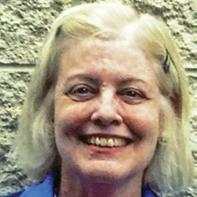
Sheila M. Cronin (giftcounselor.com) is the award-winning author of The Gift Counselor and Best of All Gifts . In addition to Liguorian, her writing has appeared in a variety of Catholic and secular publications.
Catholic Crossword answers (puzzle is on page 45) Bible Quiz answers (puzzle is on page 44)
1. W (Dan 5:27)
2. P (Lk 3:23–38)
3. D
4. E (Gen 4:2)
5. A (1 Kings 18:19–40)
6. R (Neh 8:4)
7. Y (2 Cor 7:6–9)
8. C (Col. 1:3–8)
9. L (Jer 1:6)
10. O (Gen 29:21–25)
11. B (Mk 10:46–52)
12. Q (Gen 37:36)
13. V (Lk 5:27)
14. U (Num 1:23)
15. X (Acts 18:3)
16. T (Acts 15:41)
17. S (Acts 13:6–12)
18. M
19. H (2 Cor 7:10)
20. K
21. N (Jdt 13:1–10)
22. J (Hos 8:7)
23. I (Jn 13:1–19:42)
24. F (Phil 2:12)
25. G (Judg 16:12–30)
Rate yourself on your knowledge of Scripture. Match the first column with the second. Answers are on page 43.
1. “Weighed on the scales and found wanting” ______
2. A genealogy of Jesus is found in this gospel ______
3. Book before Nehemiah ______
4. Cain’s profession ______
A. Baal
B. Bartimaeus
C. Epaphras
D. Ezra
5. Elijah defeated the prophets of this pagan god ______ E. Farmer
6. Ezra’s occupation ______ F. Fear and trembling
7. He brought Paul news of the community at Corinth ______ G. Gaza
8. He brought the gospel to Colossae ______ H. Godly sorrow
9. He insisted he was too young to answer God’s call ______
I. Gospel of John
10. Jacob’s first wife ______ J. Hosea
11 . Jesus healed this blind man ______
12 . Joseph was sold to him ______
K. Isaiah
L. Jeremiah
13 Occupation of Levi ______ M. Job
14 One of the twelve tribes of Israel ______
N. Judith
15 . Paul made a living as this ______ 0. Leah
16 . Paul took him on his trip through Syria and Cilicia ______
17 Proconsul on Cyprus who became a believer ______
18 Psalms preceder ______
19. “Salutary repentance without regret” comes from this ______
P. Luke
Q. Potiphar
R. Scribe
S. Sergius Paulus
20. Second-longest Bible book ______ T. Silas
21 . She saved the Jewish people by killing Holofernes ______
22 “They will reap the whirlwind” is found in this book ______
23 . This book contains the Book of Glory ______
24 . We should work out our salvation with this ______
U. Simeon
V. Tax collector
W. Tekel
X. Tentmaker
25 . Where Samson died ______ Y. Titus
ACROSS
1 Paul and Silas’ prison doors after the earthquake (Acts 16:25–27)
5 Destroyed, in the Douay
10 Easter is observed on the Sunday following the first full of the vernal equinox
14 Uncouth
15 Magician who wanted to buy the gift of God’s power (Acts 8:17–20)
16 Eli’s university
17 Clench
18 Stylish
19 Doolittle’s creator
20 Concerning
21 Minerals
22 Small clump of bushes
23 Empty ______
26 The Diocese of Des Moines is here
27 Make less taut
32 Sickness at the stomach
35 “Gloria in excelsis ____”
36 Sgt., for one
37 Type of sch.
38 Jewish month of Passover
40 Sotto ______
41 ______-Mart
42 Literary initials
43 St. Katherine’s surname
45 Midday naps
47 Jubilee entry
48 Impassive
52 The “ship” of a church
55 Land in which Ruth was born
58 Back of the neck
59 Middle easterner
60 Ishmael, to Jacob
62 Notion
63 Unit of distance
64 Treasury of ______
65 Parisian heaven
66 Home of Adam and Eve
67 Rhone tributary
68 Aide (abbr.)
moc.scilohtacrofsemagdrow.www
DOWN
1 Church instrument, sometimes
2 What Judas was in charge of
3 Prepares for publication
4 Patronage based on family
5 Evidence of a leak
6 Silk tree
7 Greek Catholic actor Sharif
8 Ripped
9 Tolkien creatures
10 Like Theresa of Avila or John of the Cross
11 Diocese of Honolulu home
12 Nordic Saint
13 Salamander
24 Unbiased hirer, briefly
25 Republic in central Africa
27 Jonah was thrown into this
28 City in the Archdiocese of Westminster and the Diocese of Brentwood
29 Kentucky fort
30 Word from Pontius Pilate
31 French Christmas
32 Good ______
33 Mountain range in central Asia
34 River in Africa
35 Fast Internet connector (abbr.)
39 Catholic letters
40 Her compassion is commemorated in the sixth station of the cross
44 First NT epistle
46 Number of sacraments, in Mainz
47 St. Lawrence O’Toole was archbishop of this city and is now its patron saint
49 “Quo ______?”
50 Foil relatives
51 Distributed cards
52 “In the ______ of the Father…”
53 Secret competitor
54 Dell
55 Flowers
56 Draftable
57 Height (comb.)
61 Parisian season
• I stood waving to my neighbor for ten minutes before realizing she was cleaning her windows.
• Chocolate is vital for our survival. Dinosaurs didn’t have chocolate, and look what happened to them!
• Atheism is a nonprophet organization.
• If it is true that stress brings on weight loss, why am I not invisible?
A man’s wife said to him, “What are you doing today?”
“Nothing,” said he.
“You did that yesterday,” said she. Said he: “I wasn’t finished!”
My husband works as a service technician for a large exterminating company. One of the rules of the company is that he has to confirm each appointment by phone the night before his service call to that household.
One evening, he called a customer, and when a man answered the phone, my husband said, “Hi, this is Gary from A to Z Pest Control Company. Your wife phoned us.”
There was a long silence, and then my husband heard the man on the other end say, “Honey, it’s for you. Someone wants to talk to you about your relatives.”
If you have jokes or funny stories you’d like to share, please email them for consideration to Liguorianeditor@Liguori.org, or mail them to Liguorian Editor, One Liguori Drive, Liguori, MO 63057.

“Well, which is it? In or out?”
While working at a pizza restaurant, I observed a man ordering a small pizza to go. He appeared to be alone, and the cook asked him if he would like it cut into four pieces or six.
The man thought about it for some time, then said, “Just cut it into four pieces; I don’t think I’m hungry enough to eat six.”

Young Michael was having supper at his friend’s house. As was their custom, the family said grace before eating. When the prayer was finished, Michael announced, “We don’t need to say grace at our house because my mom is a good cook!”
Al needed to shed a few pounds, so his doctor put him on a diet.
“I want you to eat regularly for two days, skip a day, then eat regularly again for two days, then skip a day. Repeat this procedure for two weeks. The next time I see you, you should have lost at least five pounds.”
When Al returned, he shocked the doctor by having lost nearly sixty pounds!
“That’s amazing!” the doctor said. “Did you follow my instructions?”
Al nodded and said, “I’ll tell you though, I thought I was going to drop dead by that third day.”
“From hunger?” asked the doctor.
“No,” Al replied. “From the skipping!”
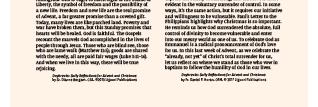
“Catholic Marketplace” is your resource for quality goods and services, as well as gifts for family and friends. The merchants represented in “Catholic Marketplace” appreciate value, a fair return on your investment, and are confident that you will be pleased with your purchase.



